By Louise Irvine
Albert Einstein, the great physicist, once said, “If you want your children to be intelligent, read them fairy tales. If you want them to be more intelligent, read them more fairy tales.” You will find lots of inspiration in our spectacular Fairyland Lustre collection. However, not everyone lives happily ever after as can be seen in Wedgwood’s Bubbles jar.
Blowing bubbles from soapsuds with a ‘magic’ pipe or wand is one of the great pleasures of childhood. Iridescent bubbles inspired Wedgwood’s designer Daisy Makeig Jones to create this Fairyland Lustre ginger jar, one of the rarest pieces in the Wiener Museum collection. Although charming on the surface, the scene is quite sinister. If you look closely, you will see that blowing bubbles is not an innocent game in Daisy’s darkly magical world and the fairies do not live happily ever after.
At the bottom of the jar, a winged elf with pointy ears blows bubbles from a long clay pipe while another fills his pipe from the lake. The orbs shimmer and sparkle as they float up through the water of a moonlit lake. However, inside the bubbles you can see baby elves and fairies who tumble out when the bubbles burst in the tree canopy at the top of the jar.
Thanks to the classic reference book about Fairyland Lustre by Una des Fontaines, we know that Daisy produced two different Bubbles designs and the variations were used on a vase, a plate, a plaque, and a ginger jar, which was known as a Malfrey Pot at Wedgwood. We can appreciate the intricate details of the Bubbles design in Una’s drawings.
Daisy told the story of her Bubbles designs in a booklet Some Glimpses of Fairyland, published in 1921. On the ginger jar at WMODA, she tells of the Nix or water elf who owns everything that falls into the lake including the souls of people who have drowned. The Nix keeps the captive souls comfortable so that they need not go to Purgatory. When they are freed, they whiz up through the water like bubbles.
The fairy tale of the Nix or Water Nixie was first published by the Brothers Grimm in Germany in the mid-19th century. The original Grimm’s fairy tale is about two children who fell down a well, but Daisy seems to have derived more inspiration from two Japanese fairy tales.
It appears that Daisy had a copy of the Myths and Legends of Japan by Frederick Hadland Davis, published in 1912. The illustrations by Evelyn Paul influenced Daisy’s drawings of dragons and other Oriental motifs as can be seen in her Bubbles plaque.
Through this book, Daisy was introduced to the work of Kano Hogai, who became famous in the west for his paintings of dragons and Buddhist gods. Hogai’s image of Kwannon or Kuan Yin, the Merciful Mother, shows the Japanese goddess pouring the water of creation from a crystal phial and the holy water falling in a series of bubbles containing little babies.
The plot thickens in Daisy’s fertile imagination. In a version of her Bubbles design for a plaque and tall vase, she weaves in a story about Benten, the goddess of love, music, and the fine arts. Before the bubbles reached the Earth, many of them were seized by an evil Dragon, who devoured little children. Aghast, the Gods sent the goddess Benton down to earth to tame the dragon. Her influence was so great that he abstained from slaughter. Ultimately, he ascended to heaven and became a celestial Dragon.
On the lid of the Bubbles jar at WMODA, the evil dragon is replaced by Arachne, a giant spider who catches elves and fairies to eat them. The spider is surrounded by babies, who have escaped, some of whom are crying. Inside the lid, a spectral bubble shows more freed souls crying and praying.
In Greek mythology, Arachne, a talented mortal weaver, challenged Athena, the goddess of wisdom and crafts, to a weaving contest. Arachne's excessive pride resulted in her being transformed into a spider. Gustave Dore’s illustration of Arachne’s punishment in Dante’s Purgatorio is one of the scariest depictions of this transformation and Daisy shared his vision of souls in Purgatory. According to Daisy, all spiders become Oni or demons after dark and are very difficult to kill. They have no blood but are filled instead with a white sticky substance which is magic.
Daisy first dreamt up the Bubbles design in 1920. Perhaps the sinister images were a response to the trauma of the Great War, which raged in Europe from 1914 to 1918, and impinged on Daisy’s subconscious in the aftermath. She might also have been inspired by the popular song I’m Forever Blowing Bubbles, which debuted on Broadway in 1918 and became a major hit on Tin Pan Alley and British music halls.
However, the ginger jar at WMODA must date from 1928 when Wedgwood first introduced their Moonlight luster glaze effect in shades of deep peacock blue. The Fairyland Lustre decorating process was extremely complex with up to six firings required to achieve the glimmering rainbow effects. There were several glaze colors, including a mother-of-pearl luster, known as Daylight, a black Night-time effect and a fiery Flame luster which can be seen on the Goblins vase. Notice they are also blowing bubbles.
The jar at WMODA is extremely rare as production of Fairyland Lustre was impacted by the Wall Street Crash in 1929. Wedgwood’s export market collapsed and demand for luxury goods waned. Despite major celebrations to commemorate the bicentenary of Josiah Wedgwood’s birth in 1930, drastic economic measures were taken. Daisy was asked to retire from Wedgwood but initially she refused to go. Finally, after a huge row, she stormed out ordering all the Fairyland Luster pieces in her studio to be smashed. Daisy’s extraordinary Wedgwood career did not end happily ever after.
Visit the WMODA to see the video Daisy’s Dark Side shown in the Fantastique exhibit.
I'm forever blowing bubbles,
Pretty bubbles in the air,
They fly so high,
Nearly reach the sky,
Then like my dreams,
They fade and die.
Fortune's always hiding,
I've looked everywhere,
I'm forever blowing bubbles,
Pretty bubbles in the air.
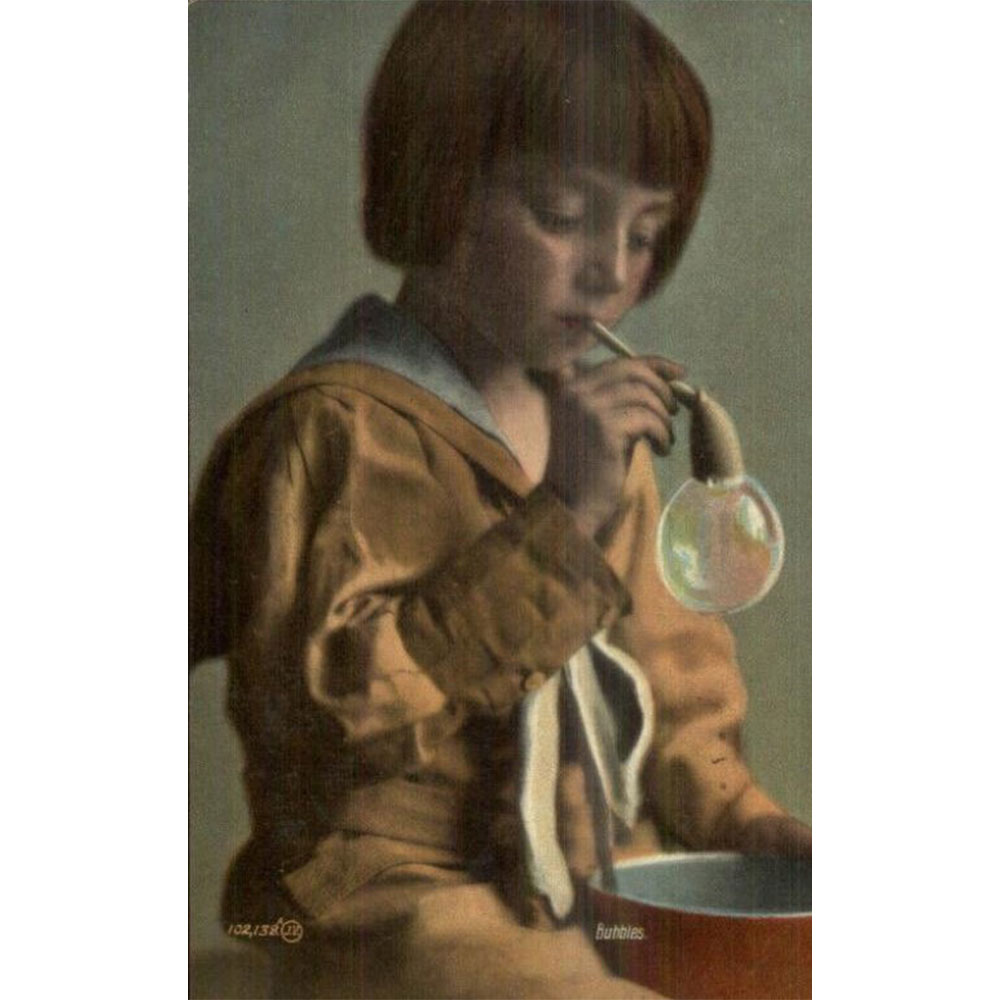
Boy Blowing Bubbles
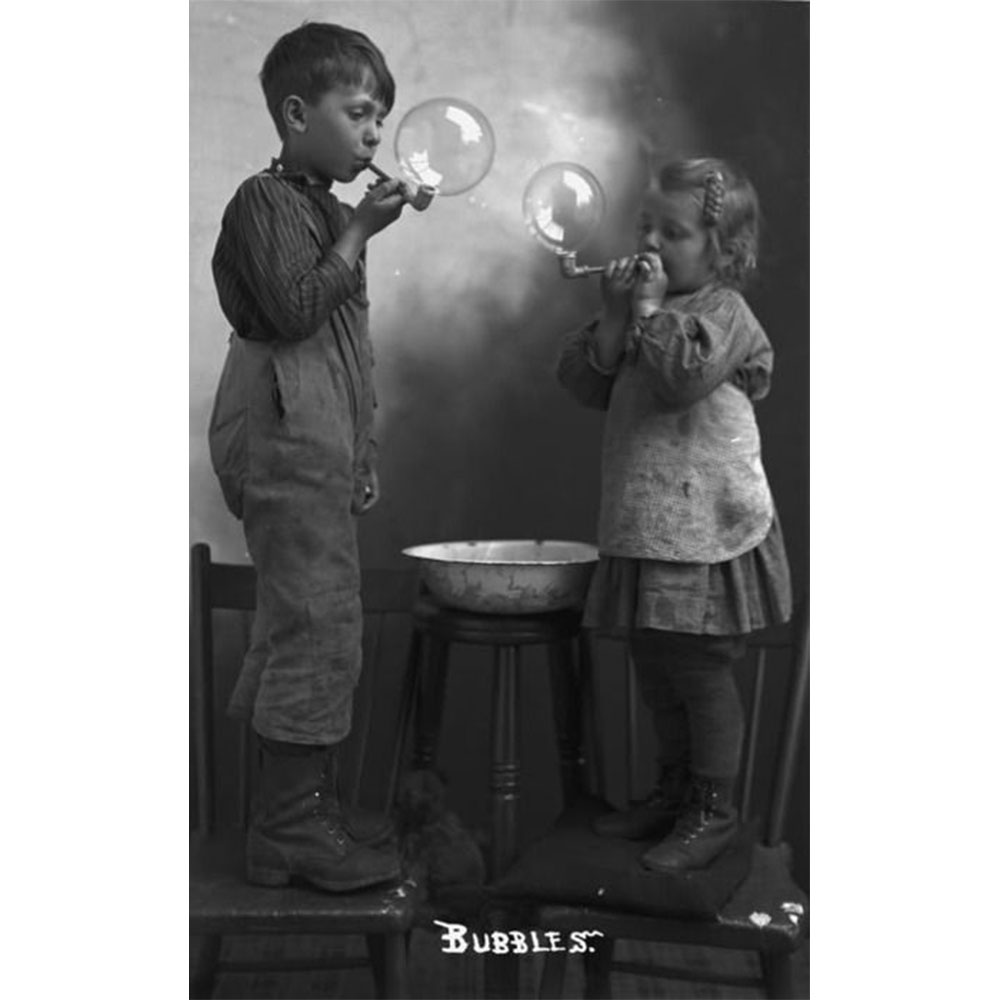
Children blowing bubbles
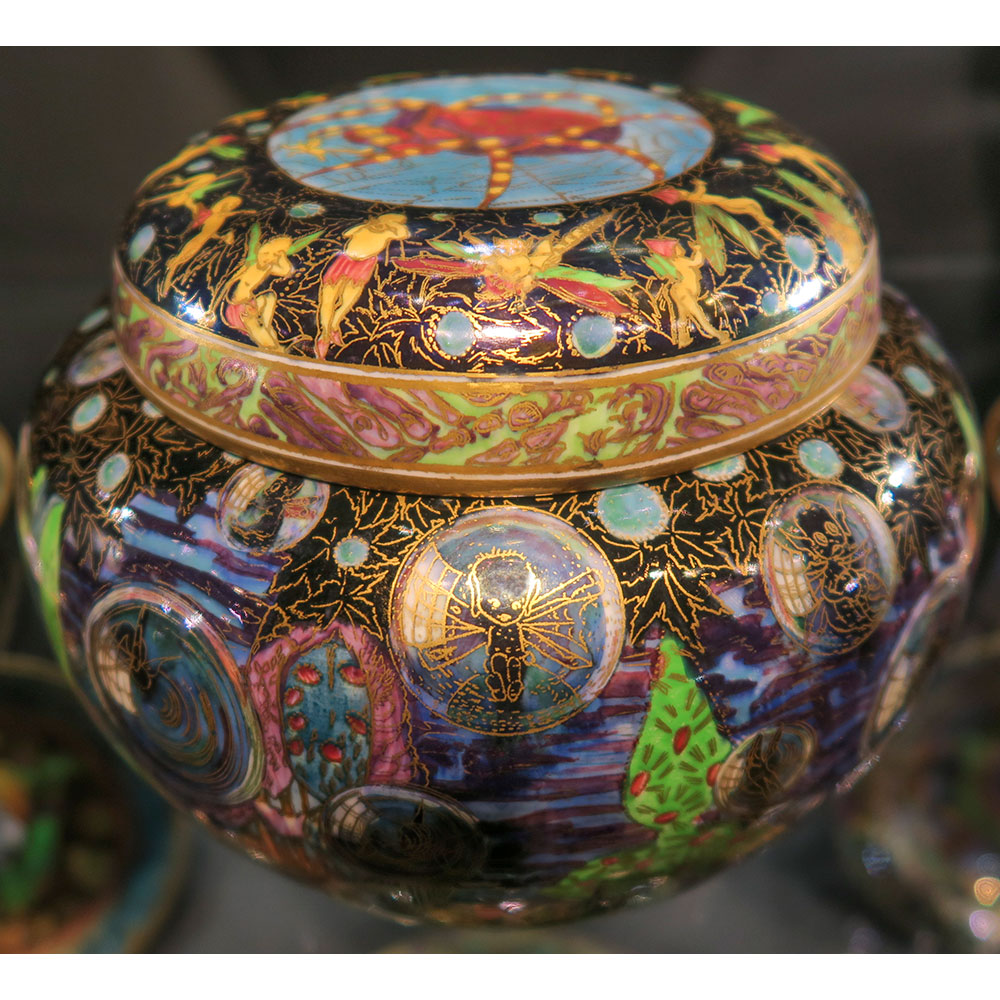
Wedgwood Bubbles Malfrey Pot by D. Makeig Jones on display at WMODA
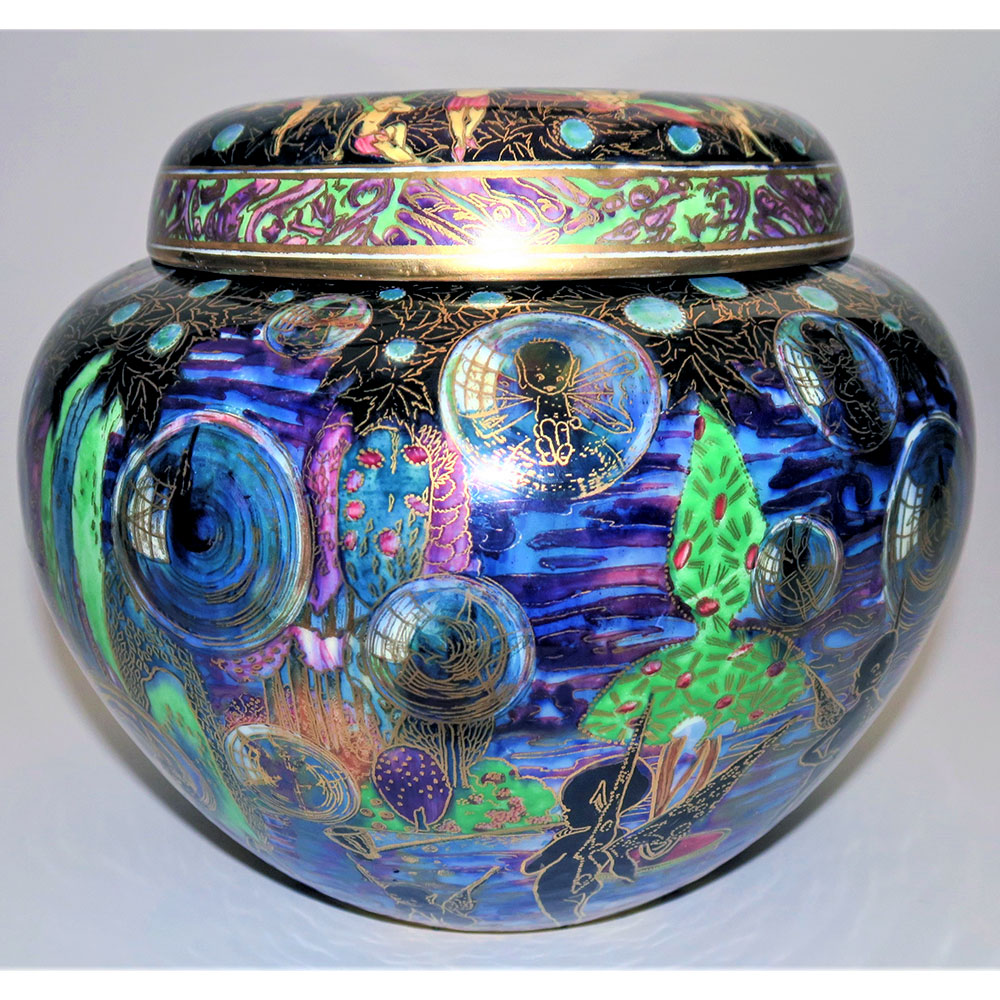
Wedgwood Bubbles Malfrey Pot by D. Makeig Jones
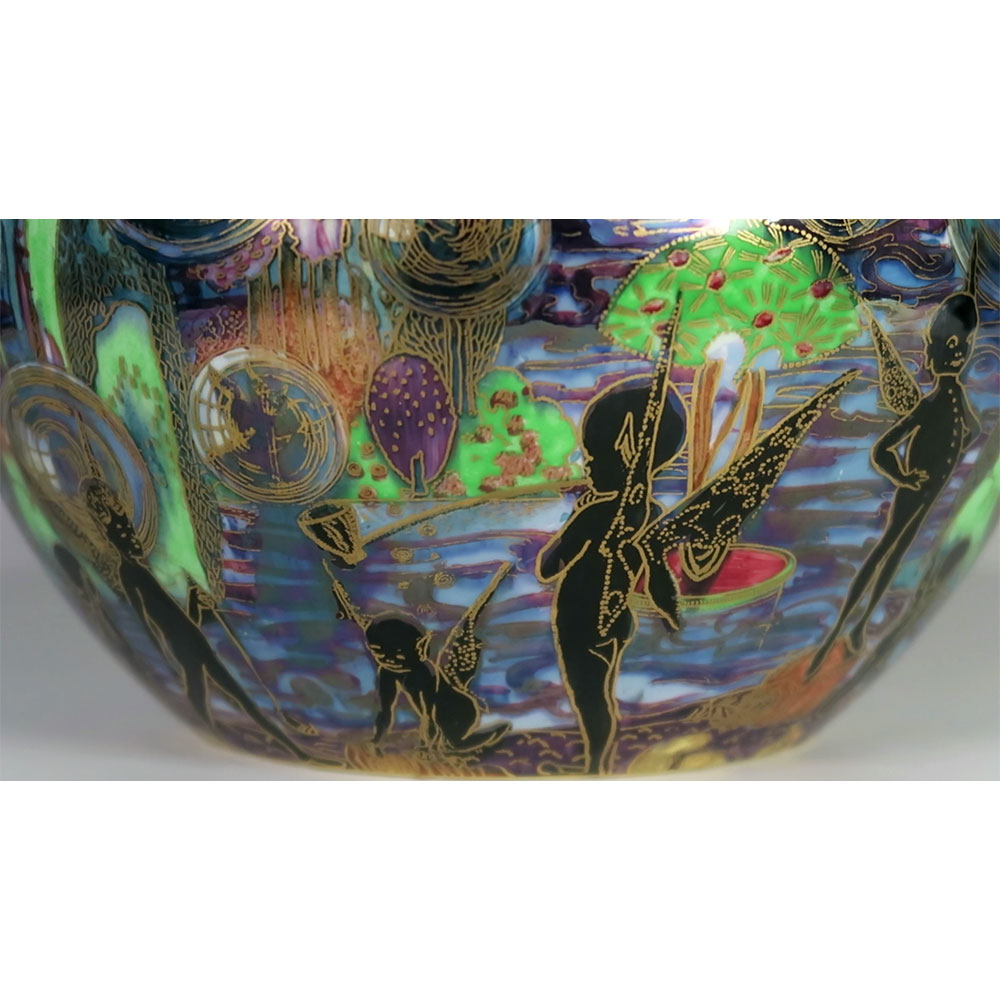
Bubbles detail
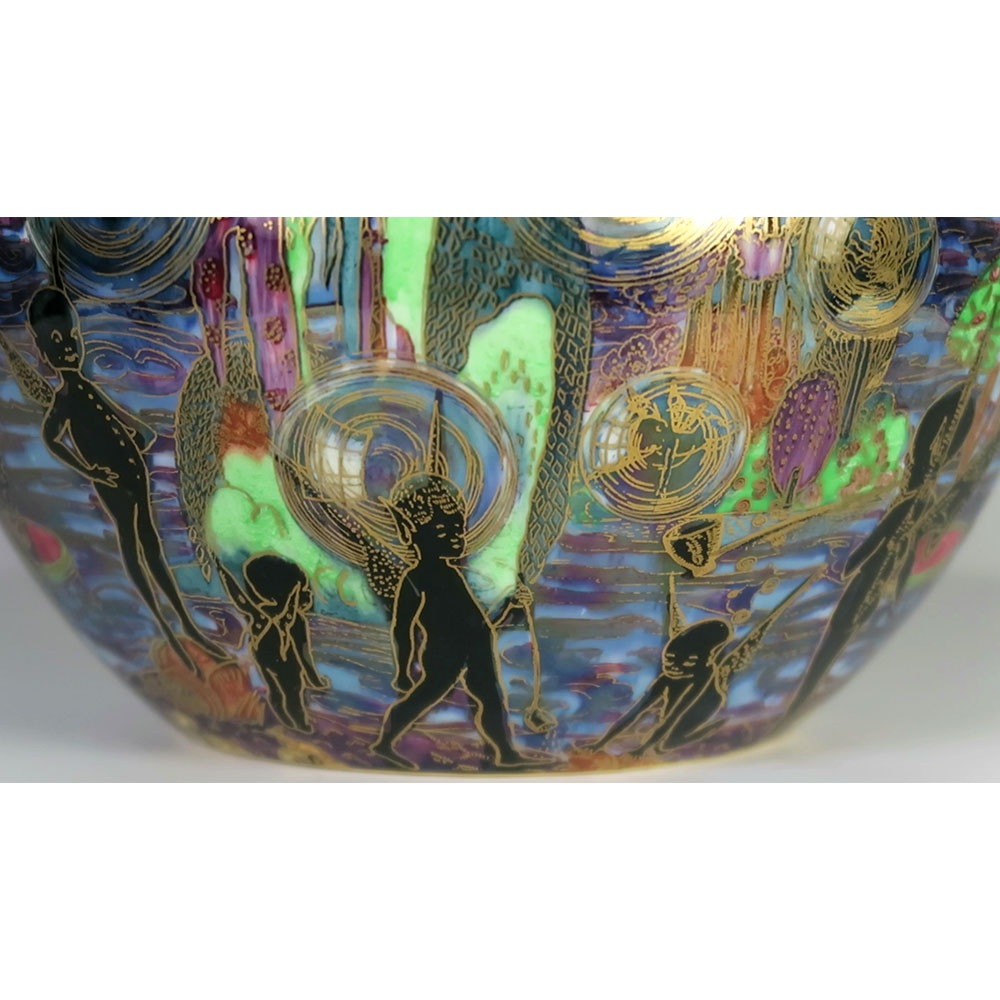
Bubbles detail
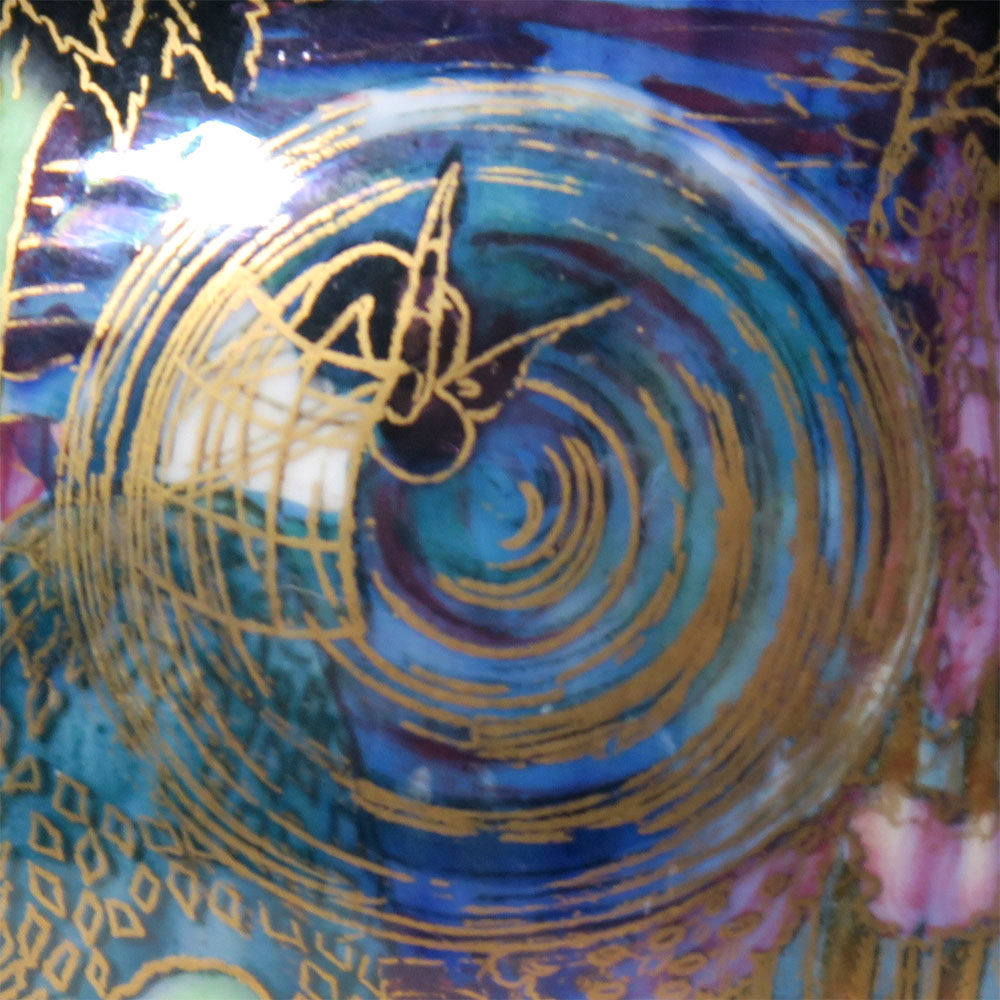
Bubbles detail
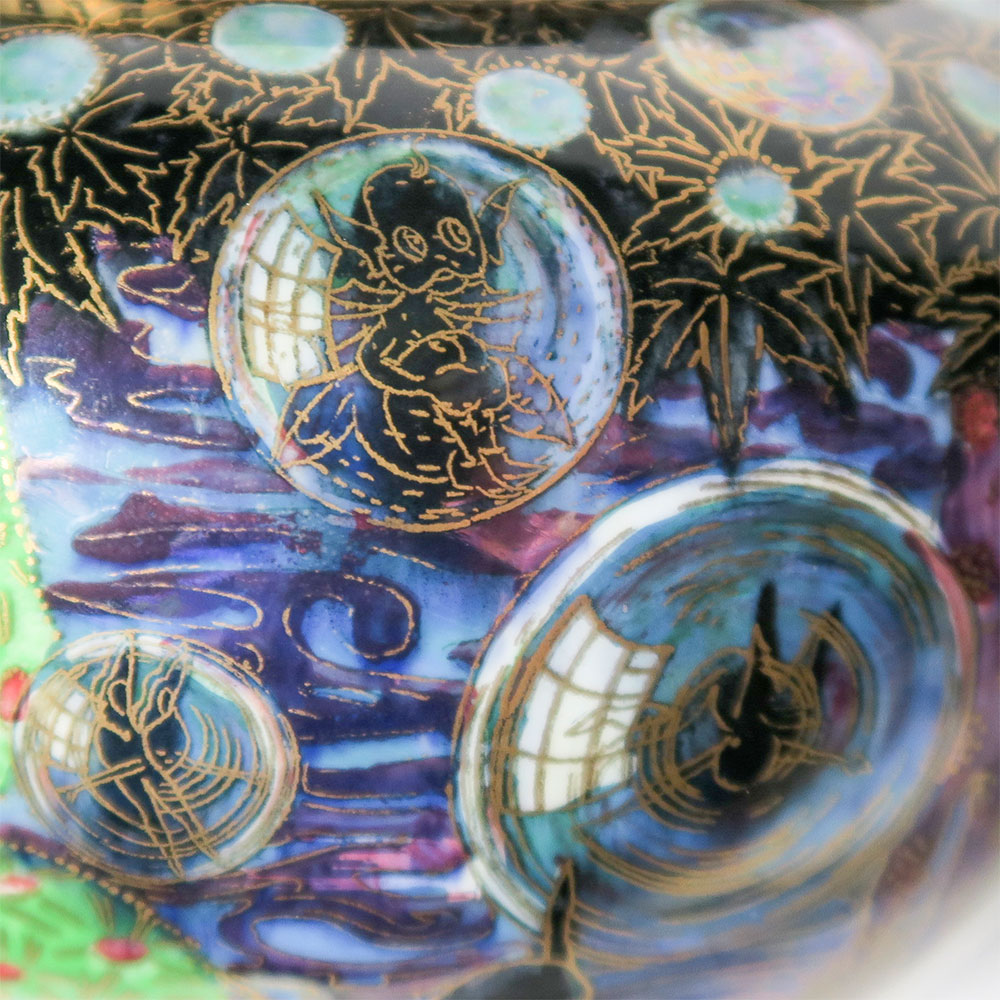
Bubbles detail
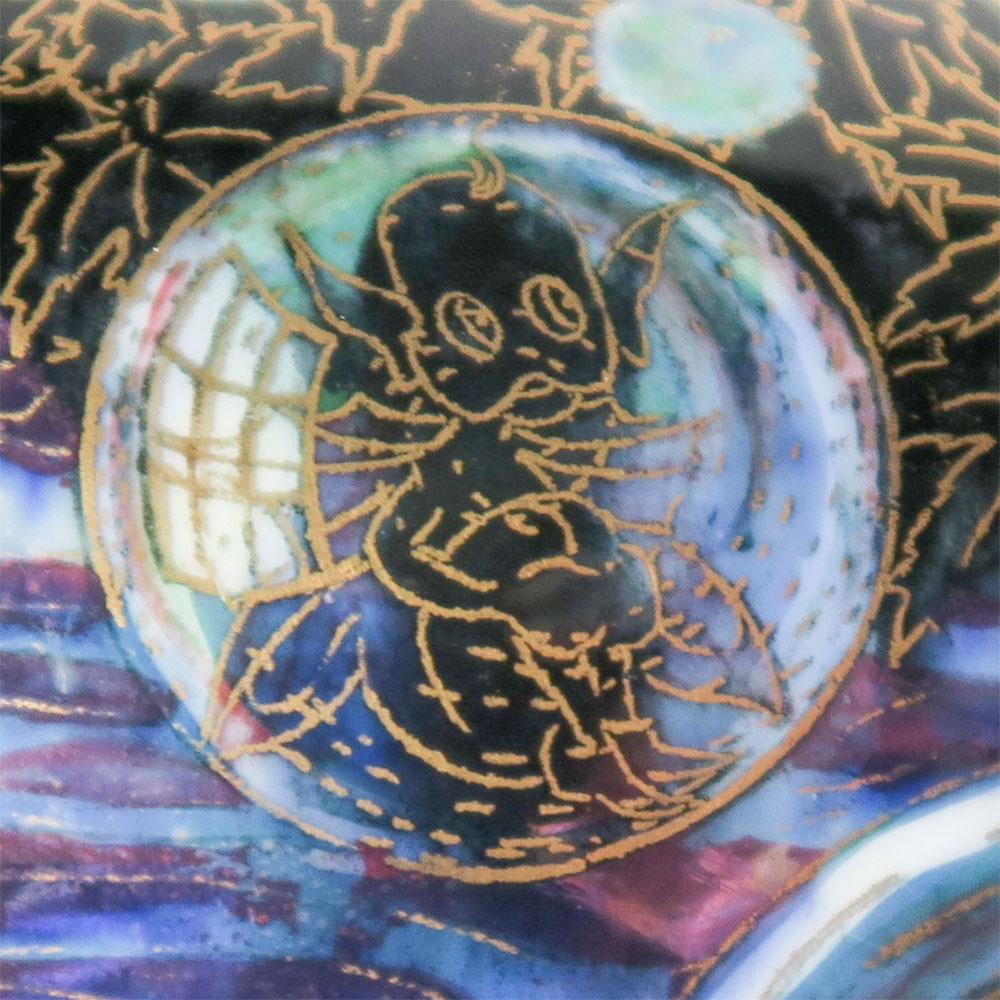
Bubbles detail
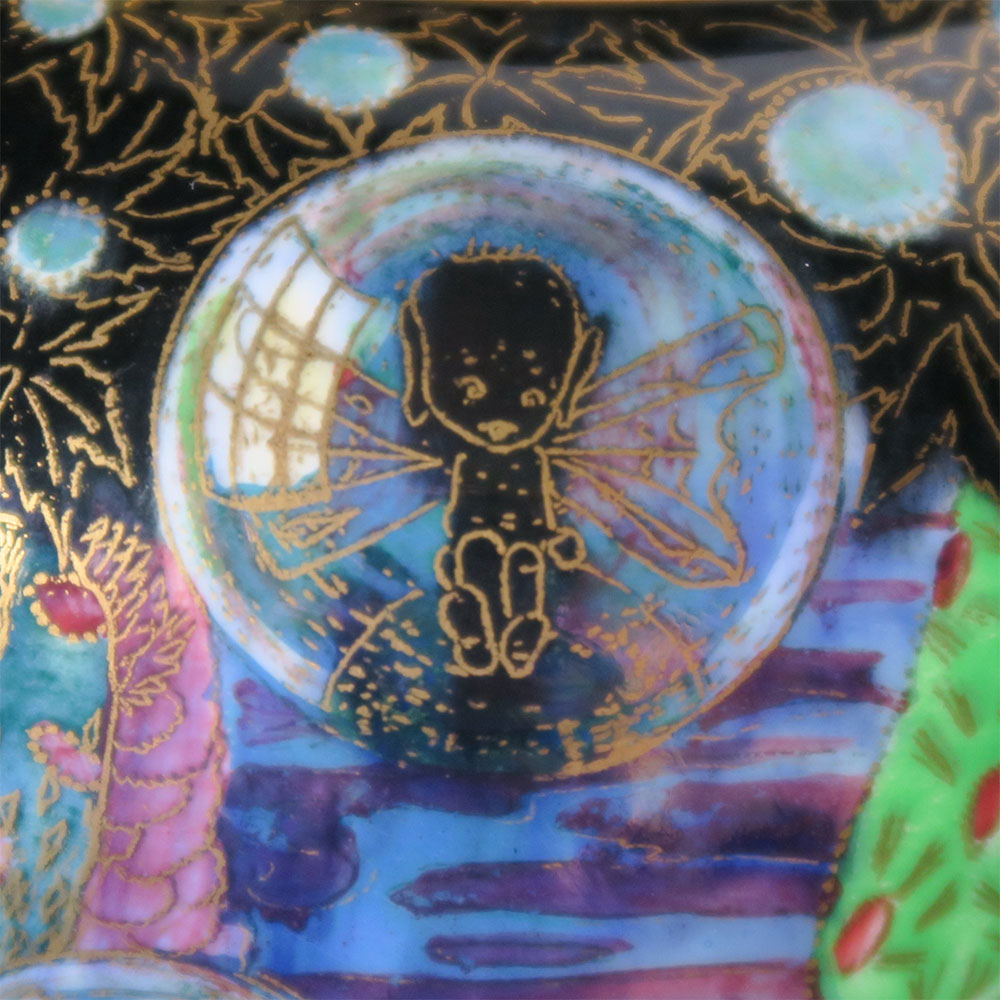
Bubbles detail
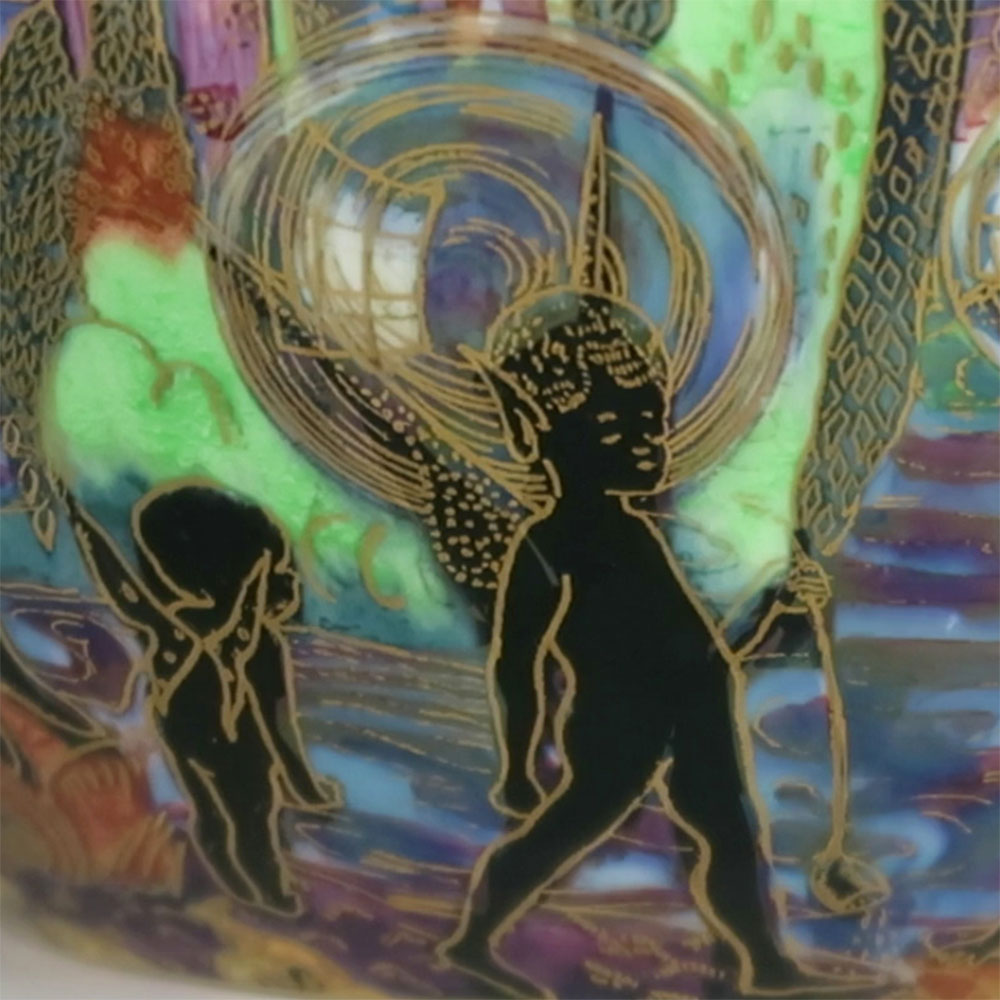
Bubbles detail
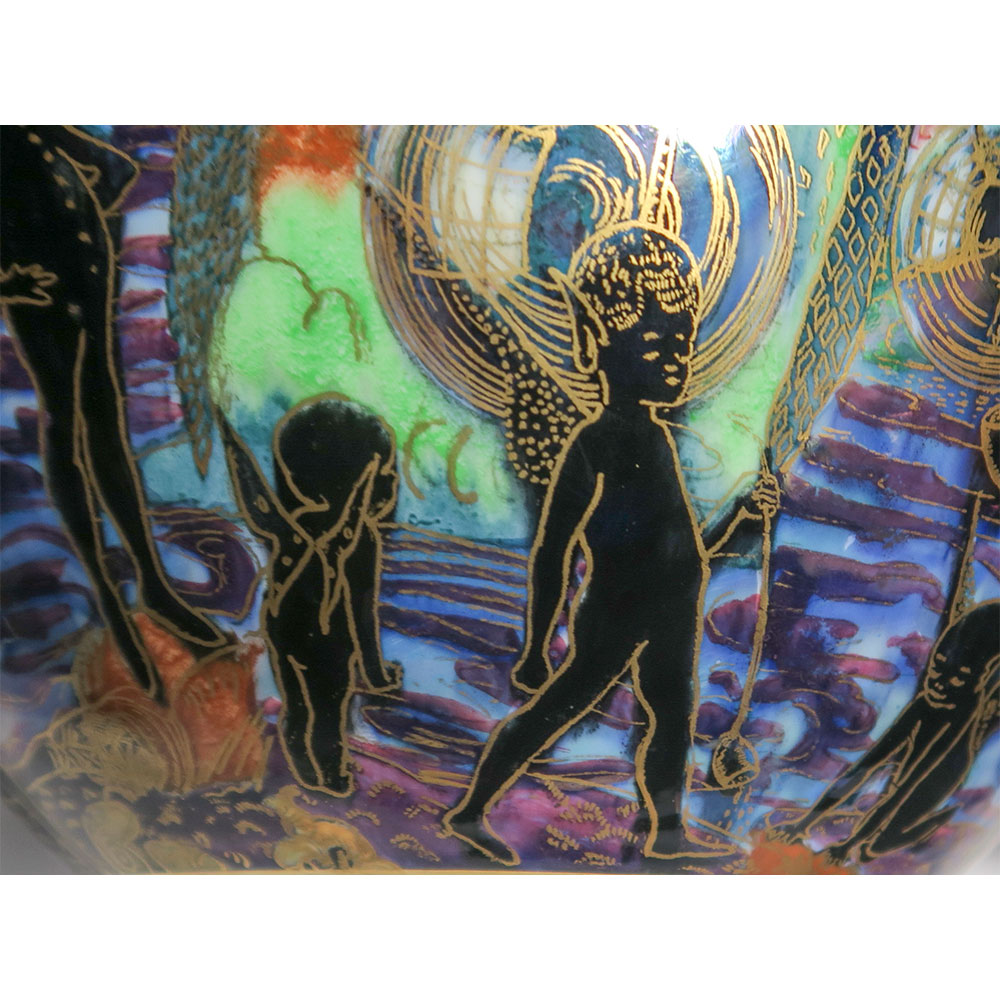
Bubbles detail
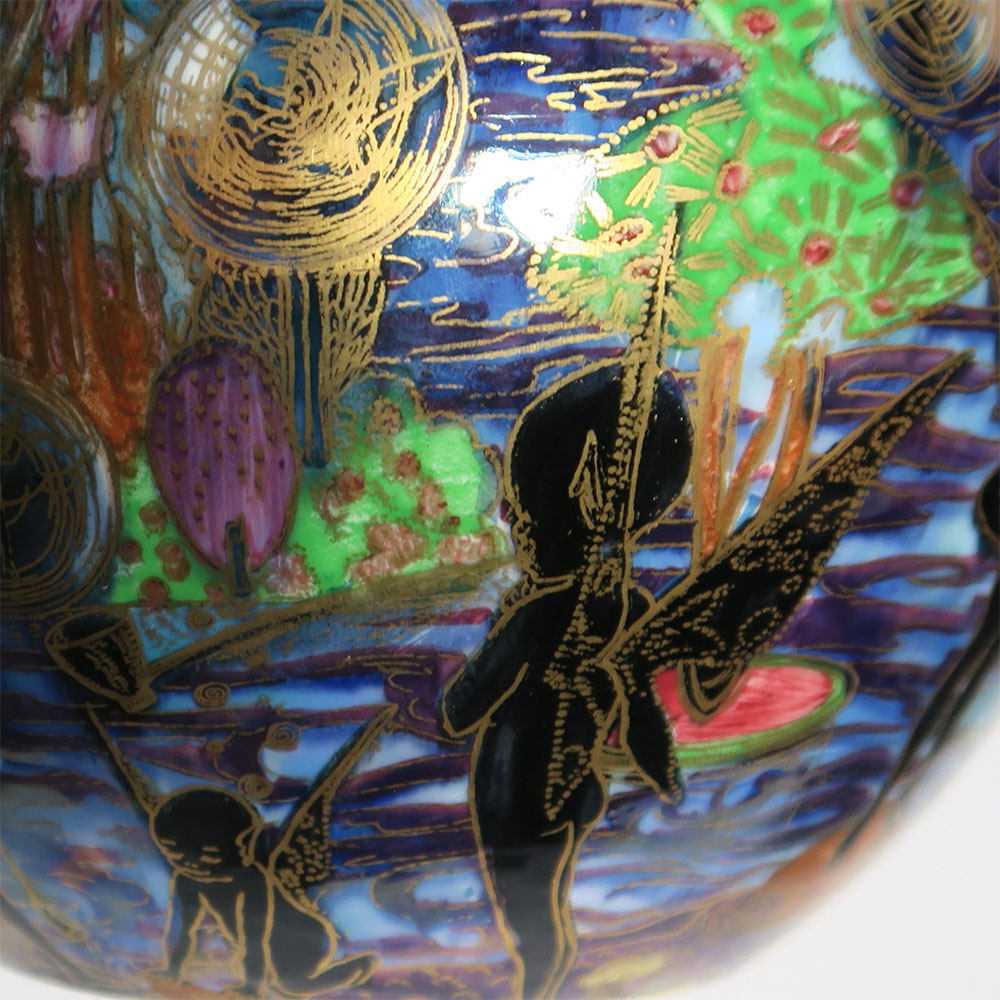
Bubbles detail
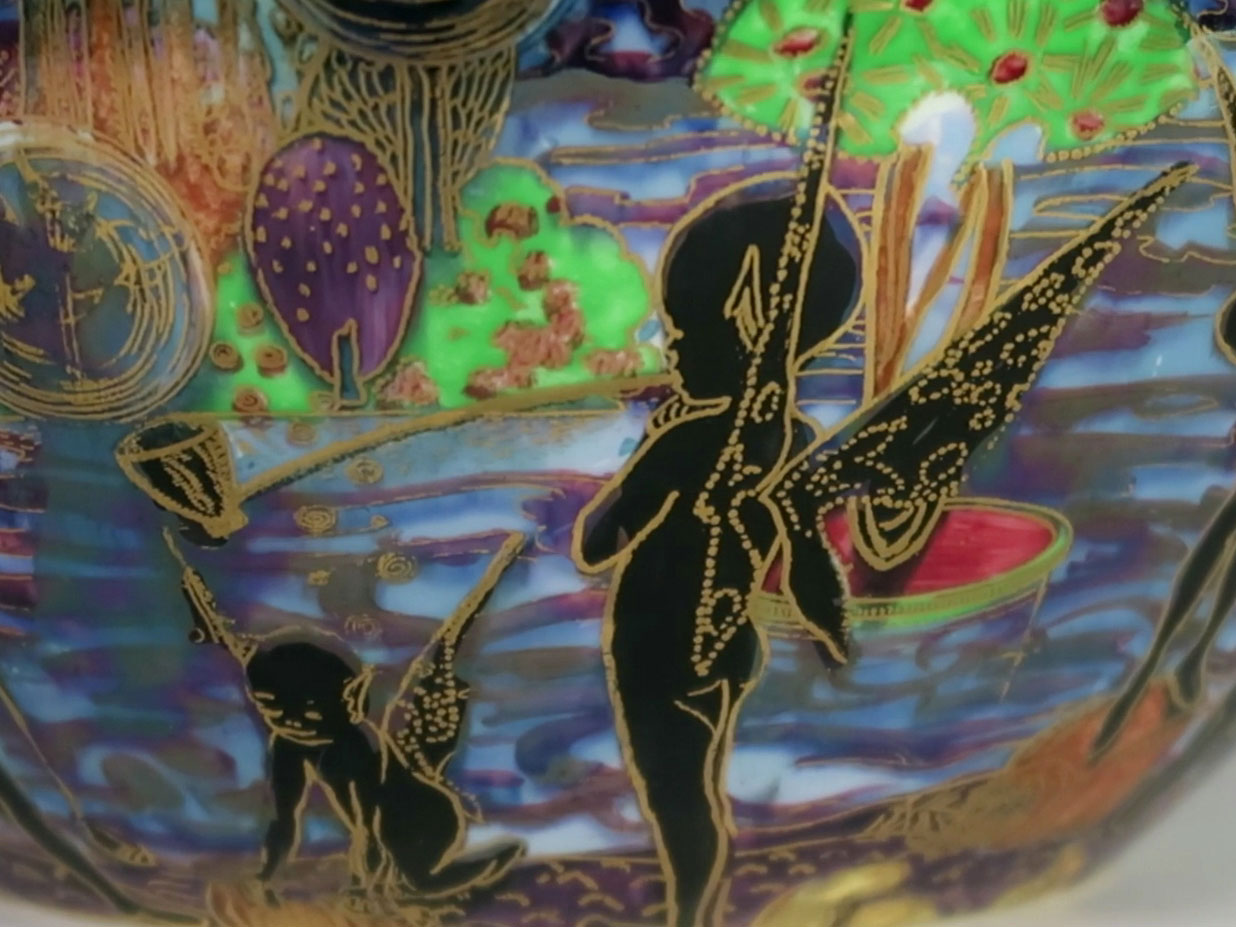
Bubbles detail
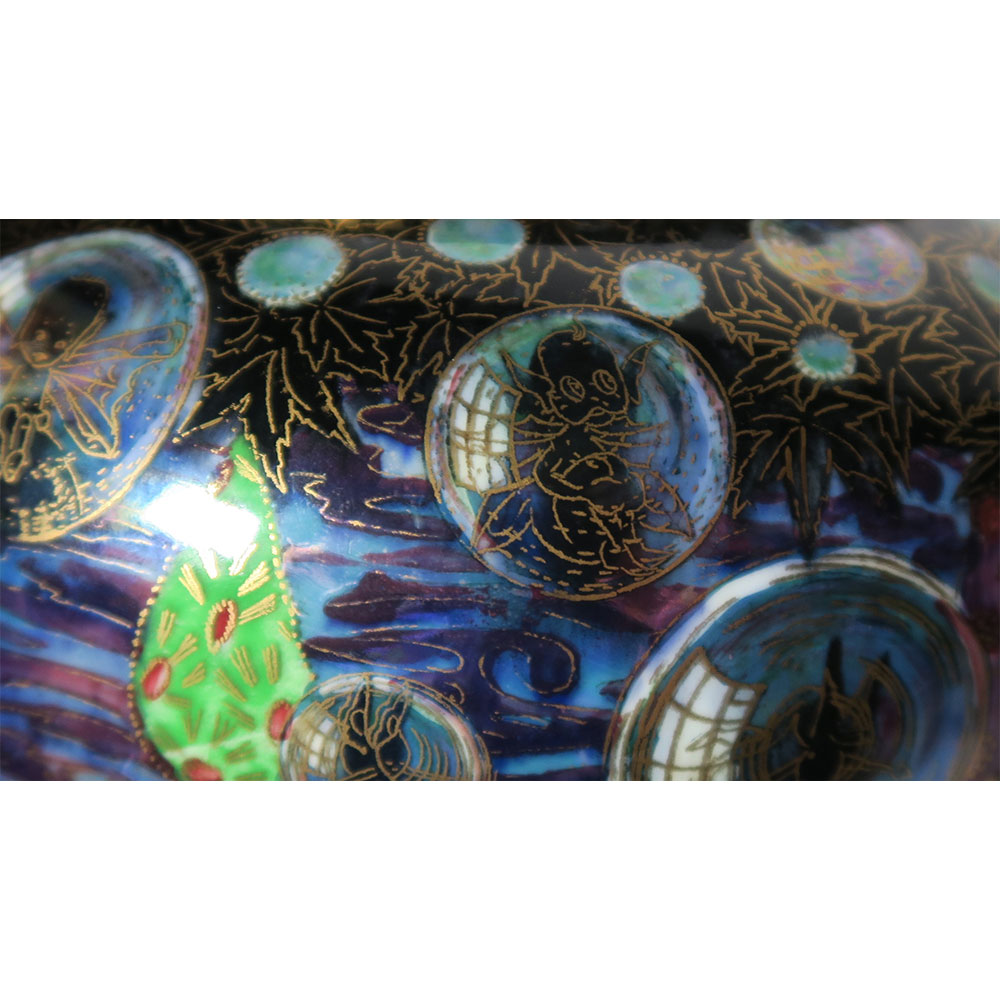
Bubbles detail
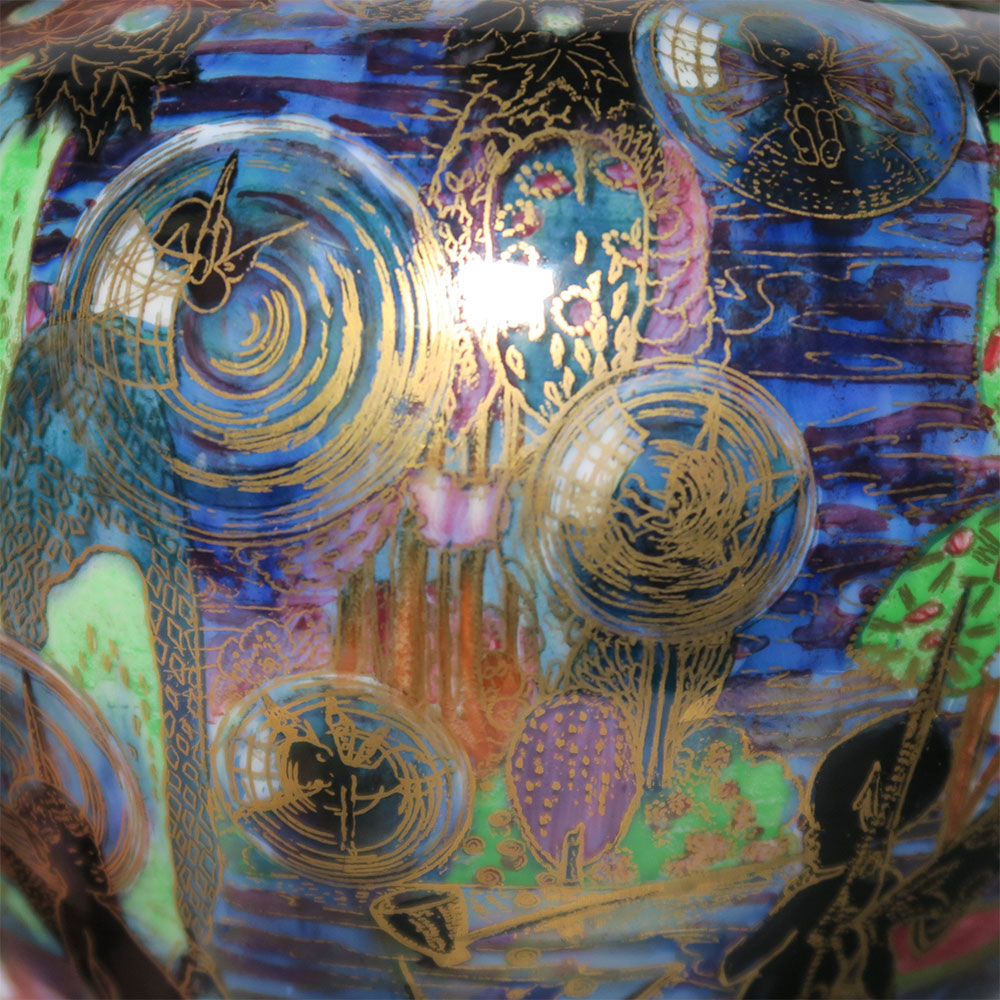
Bubbles detail
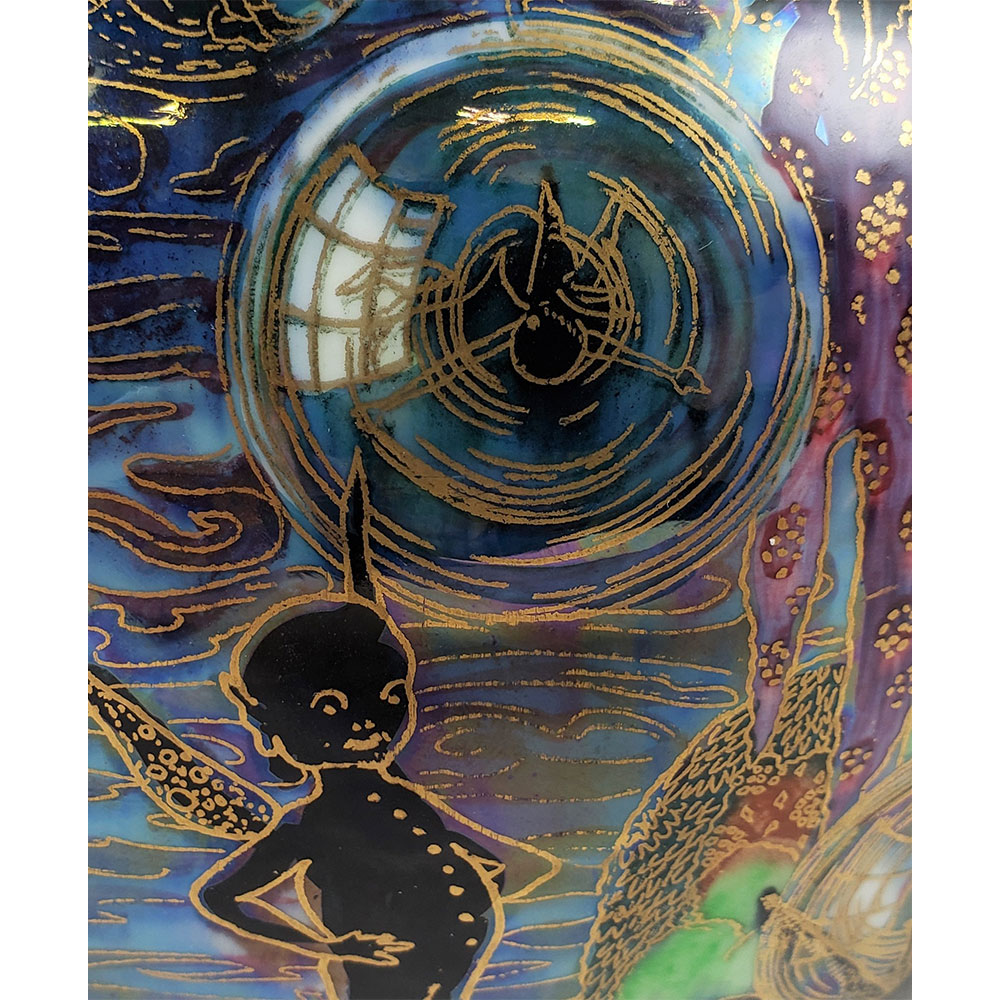
Bubbles detail
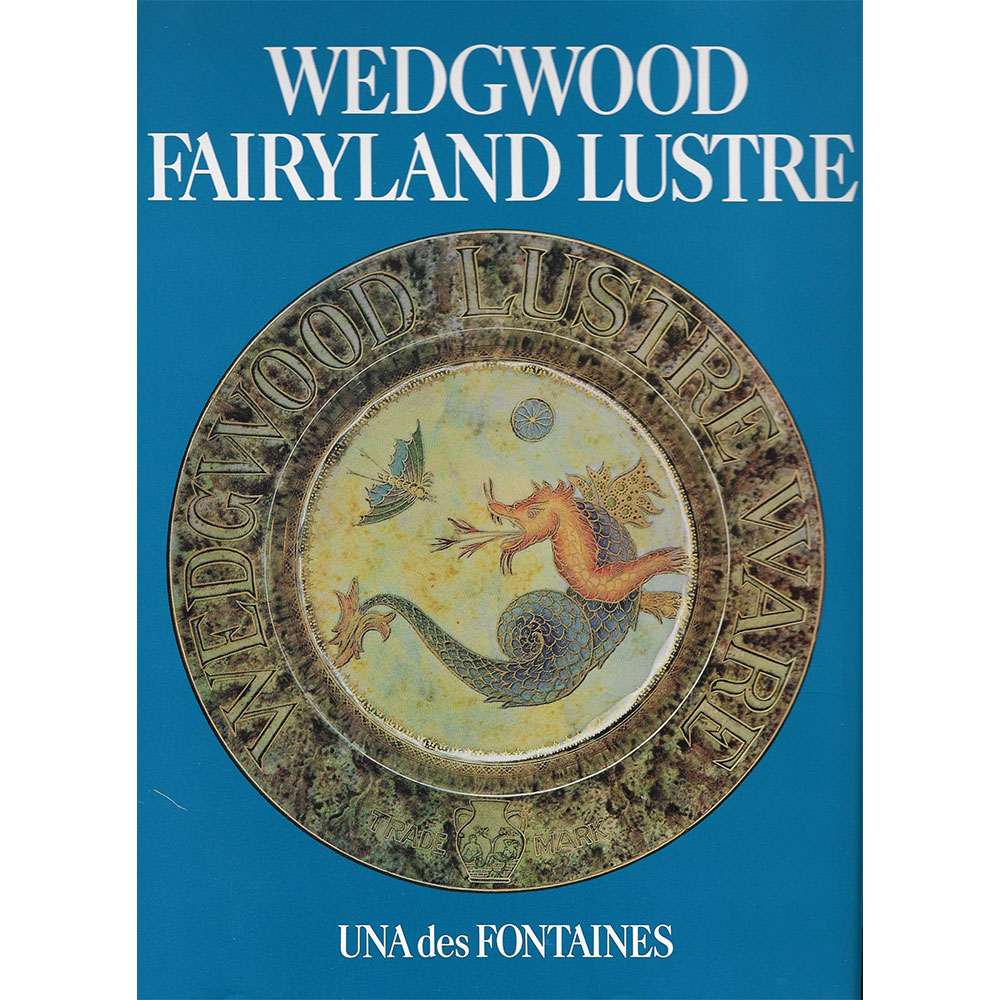
Wedgwood Fairyland Lustre by Una des Fontaines
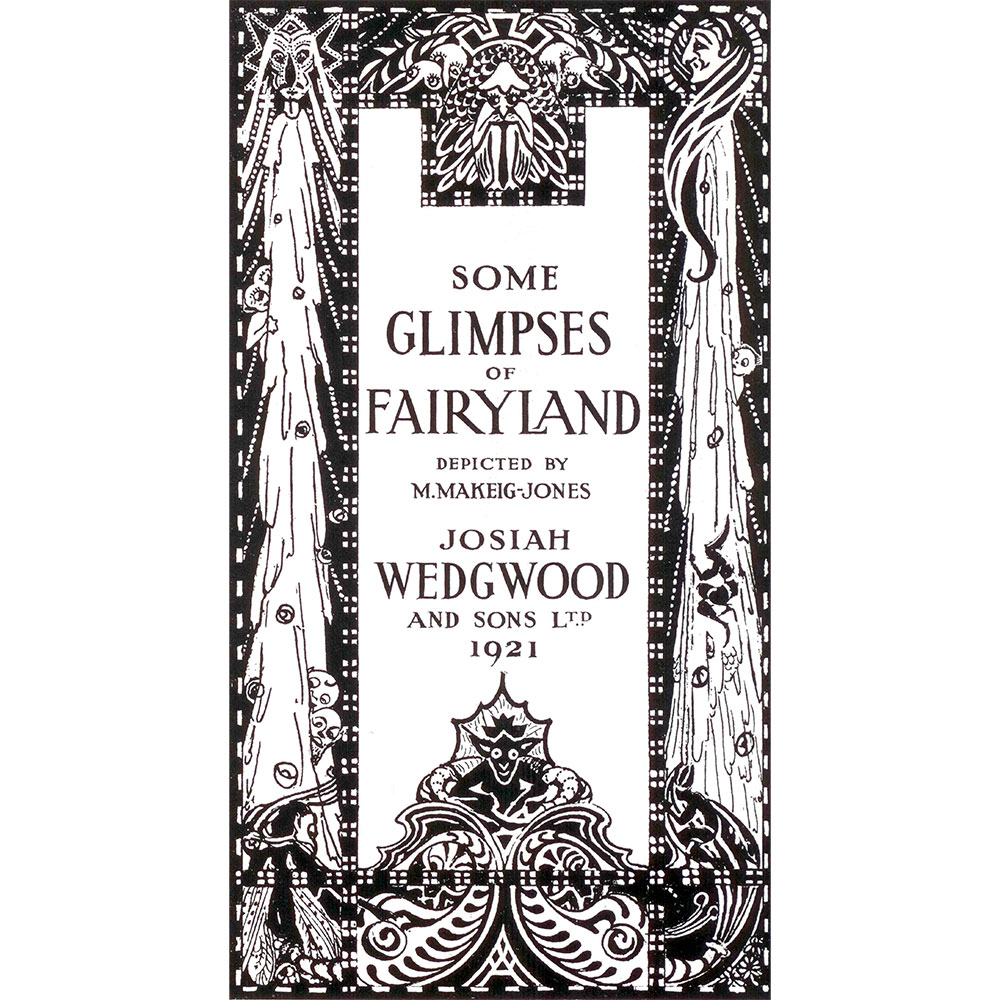
Fairyland catalogue
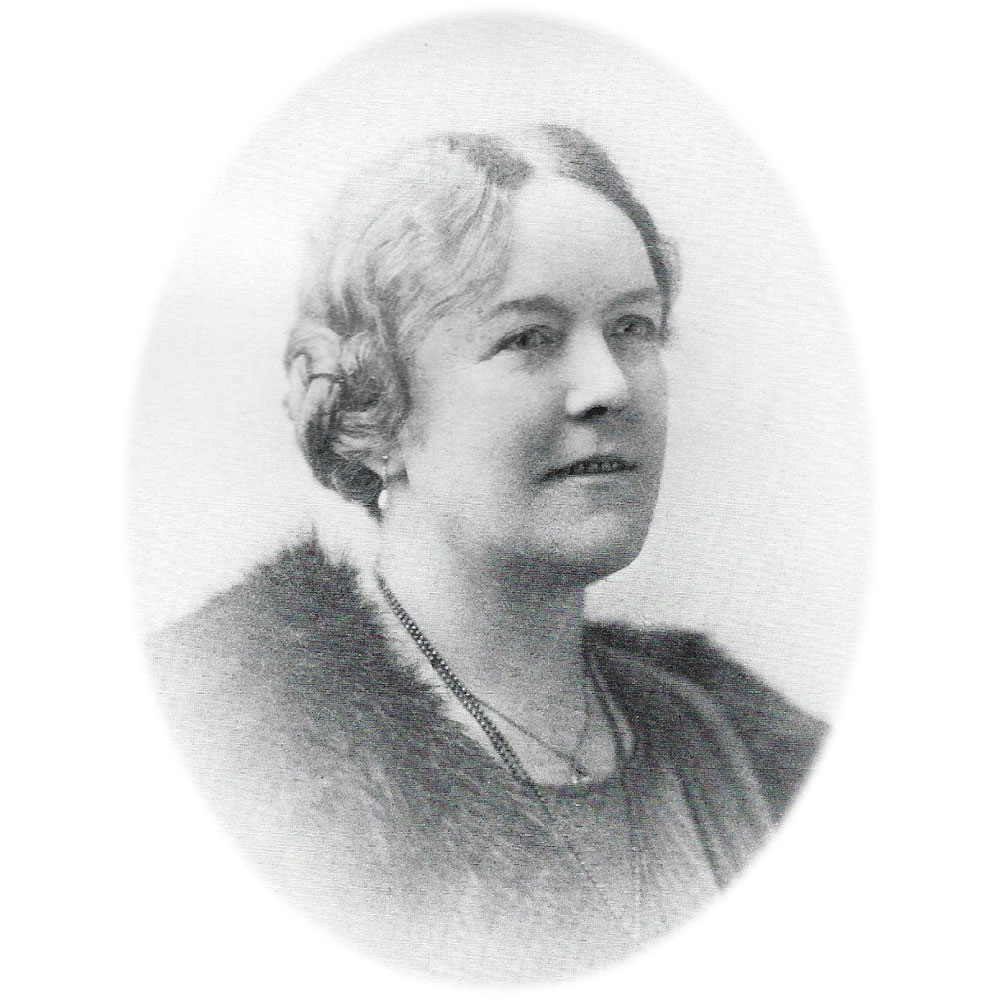
Daisy Makeig Jones
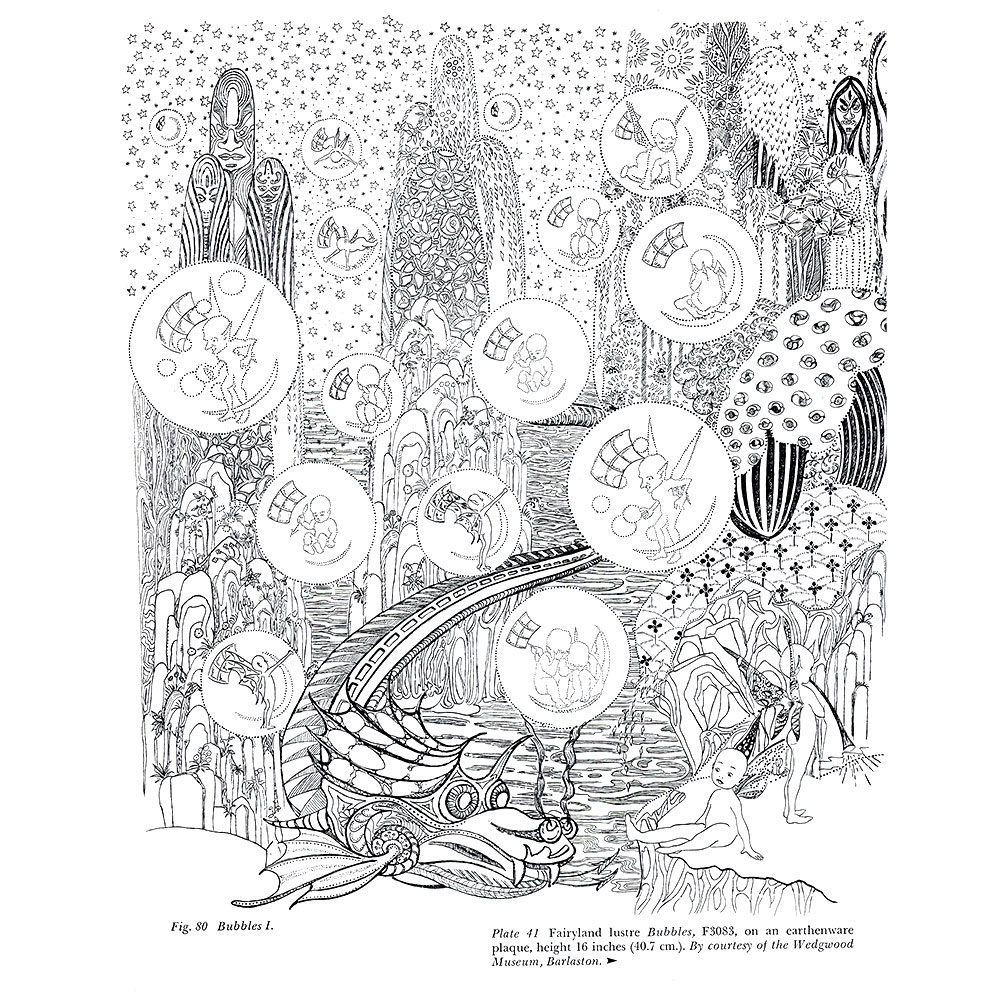
Bubbles Malfrey Pot
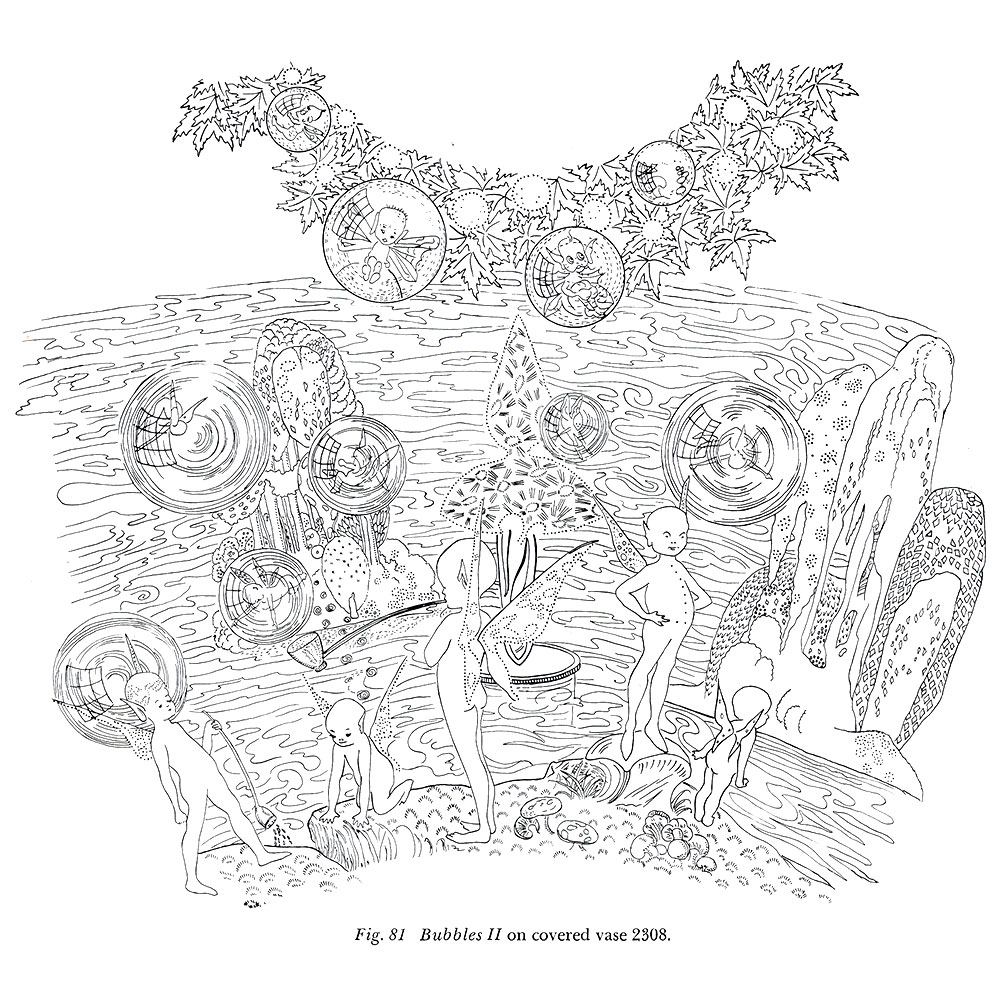
Bubbles Plaque
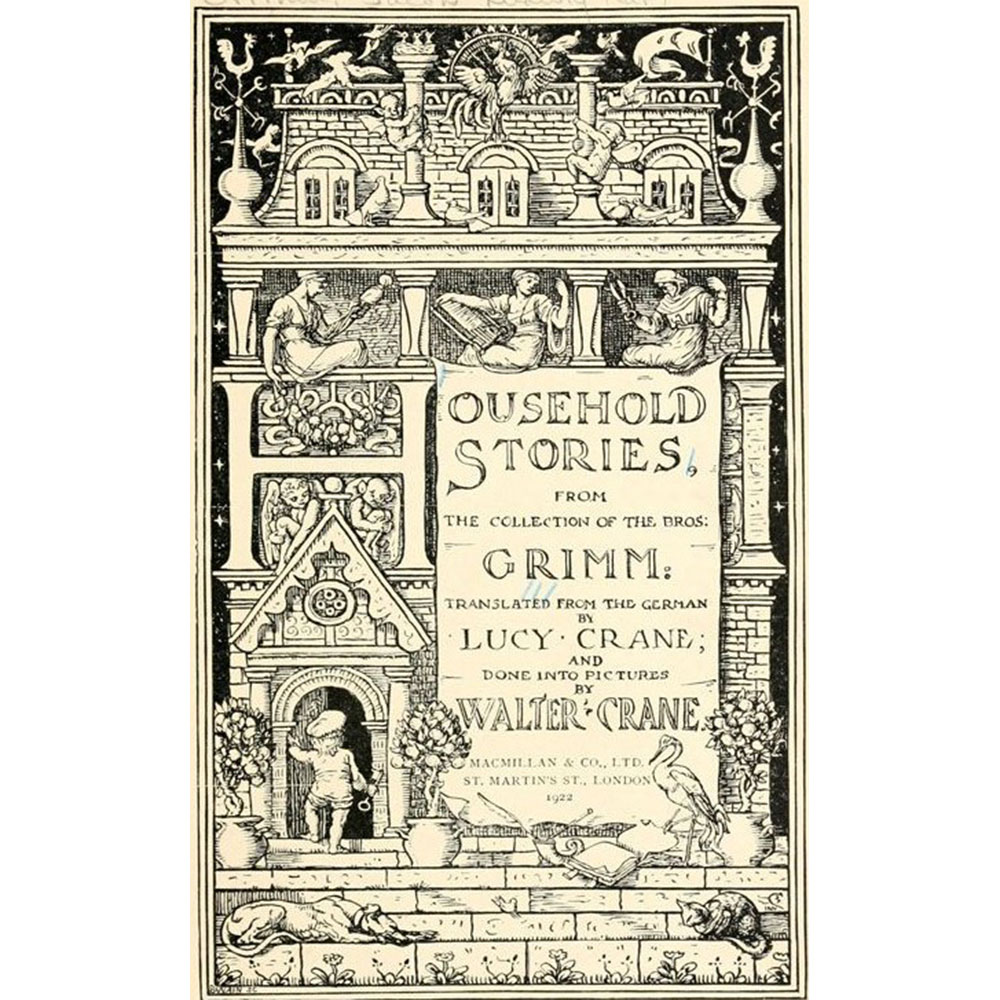
Household Stories by Brothers Grimm
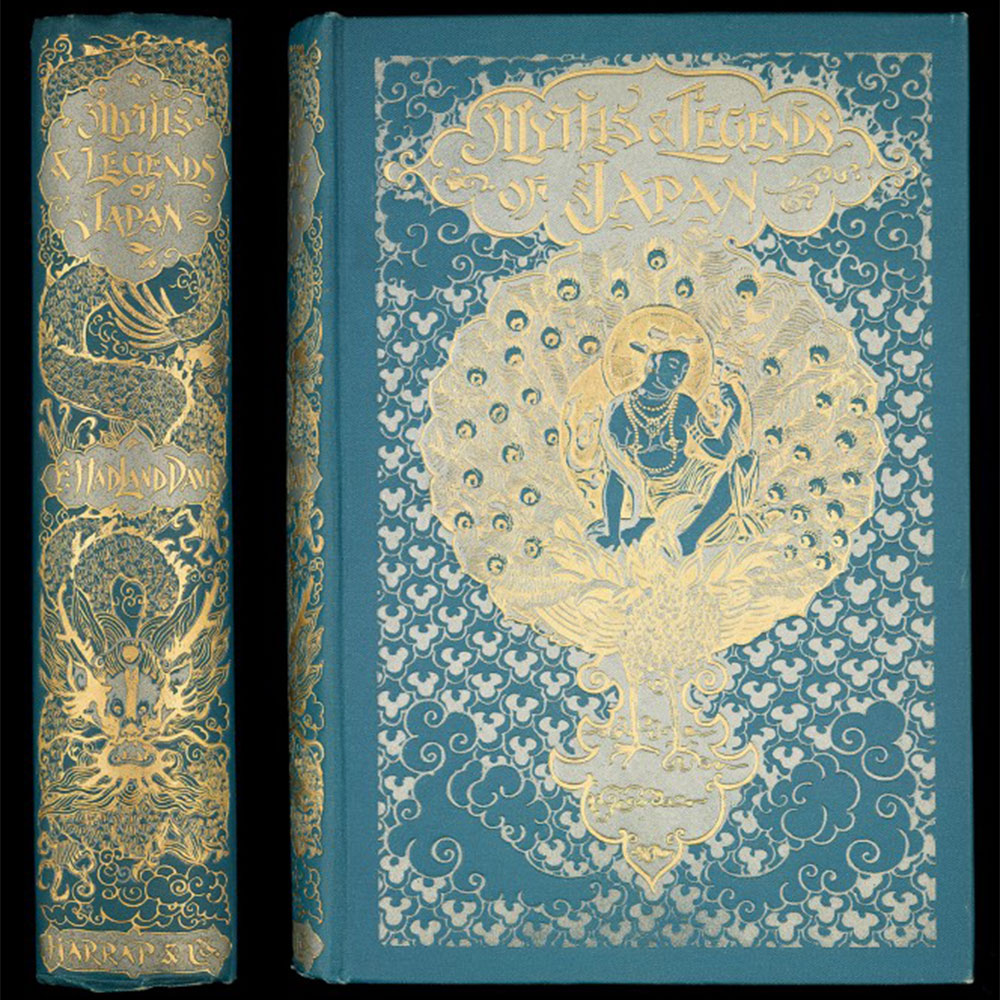
Myths and Legends of Japan by F.H. Davis
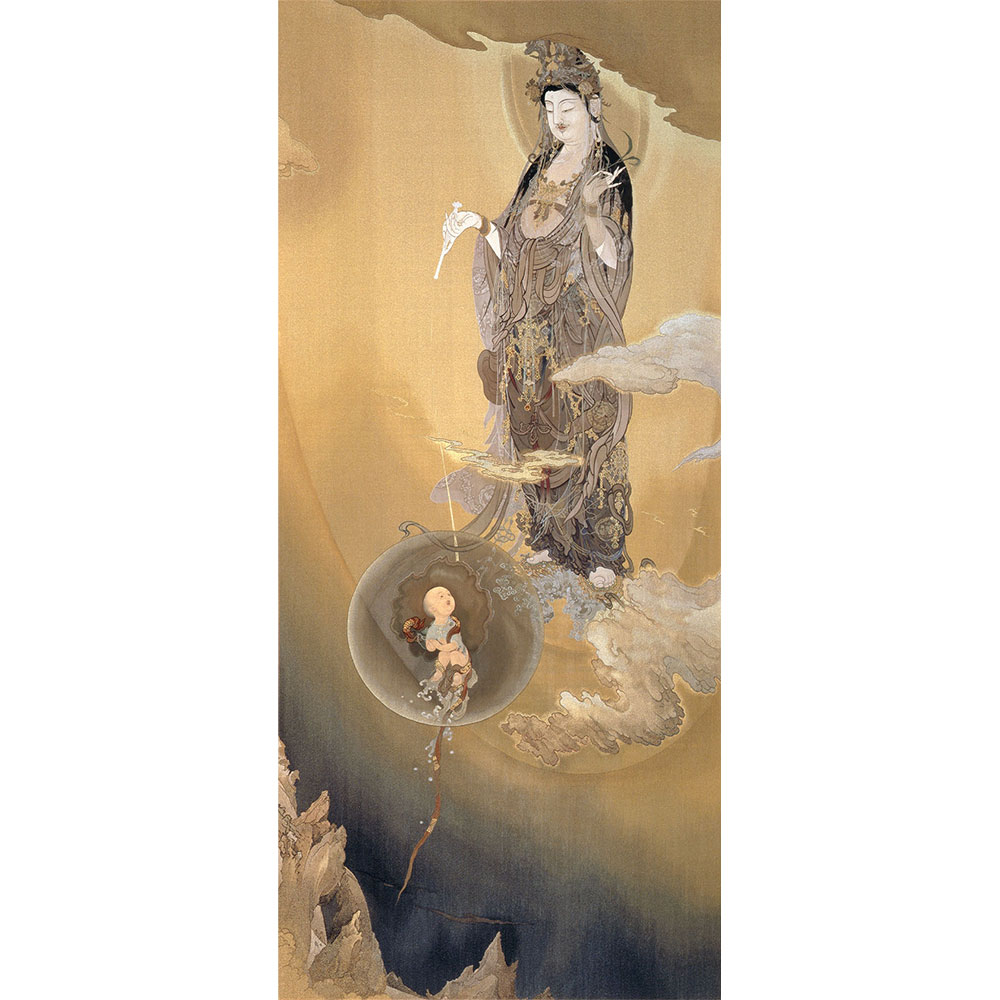
Merciful Mother by K. Hogai
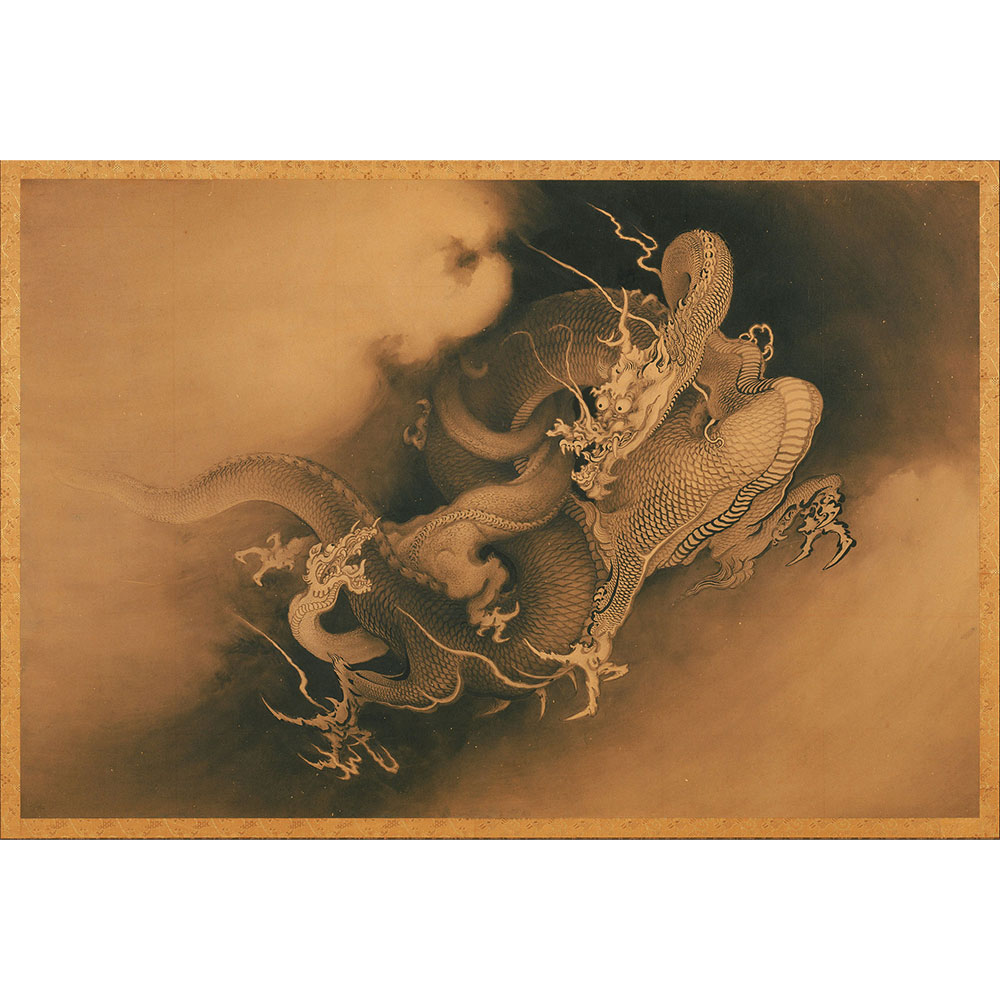
Two Dragons in Clouds
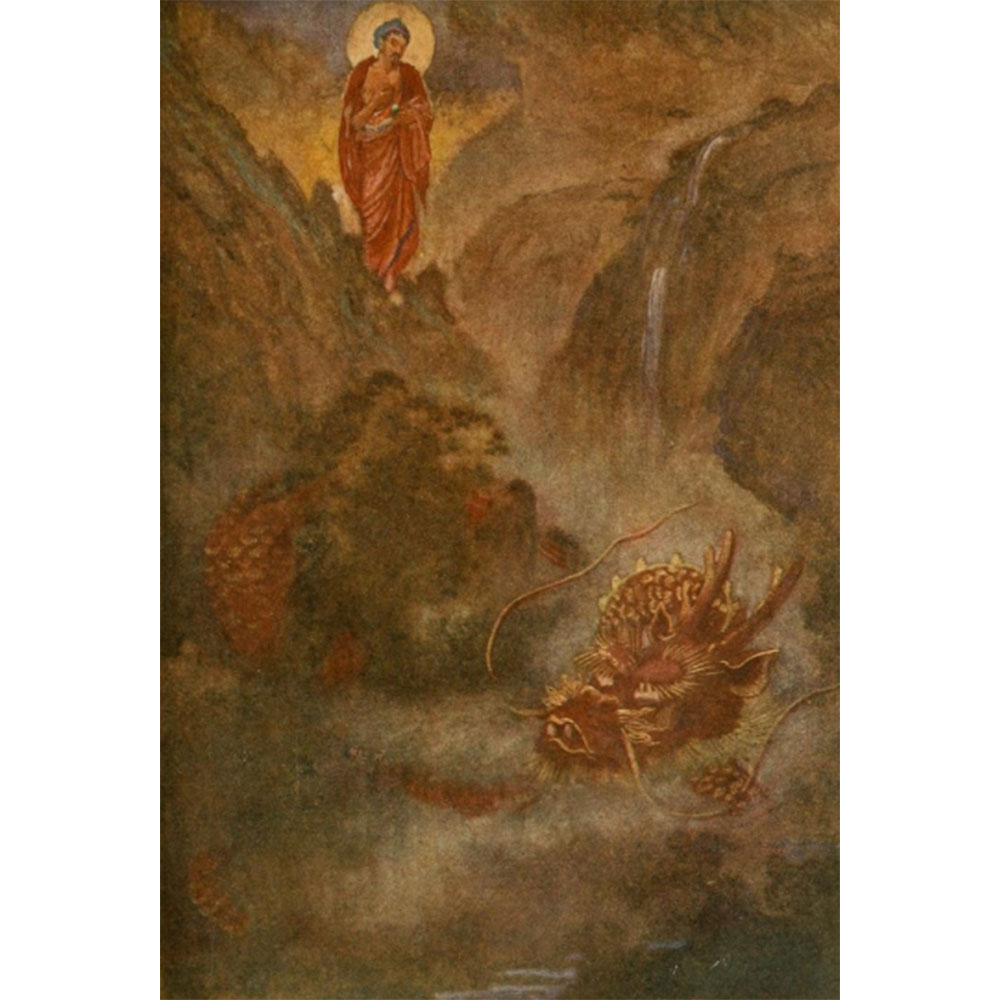
Buddha and the Dragon by E. Paul
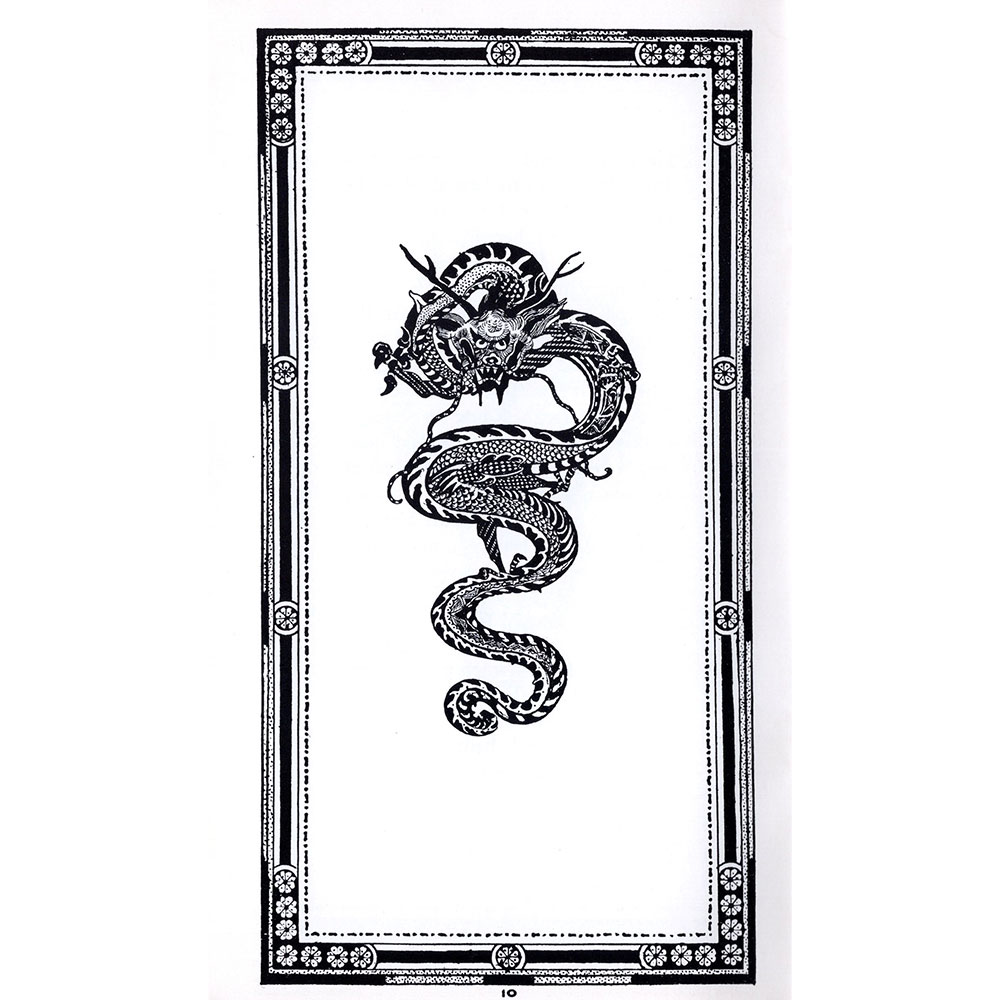
Dragon design by D. Makeig-Jones
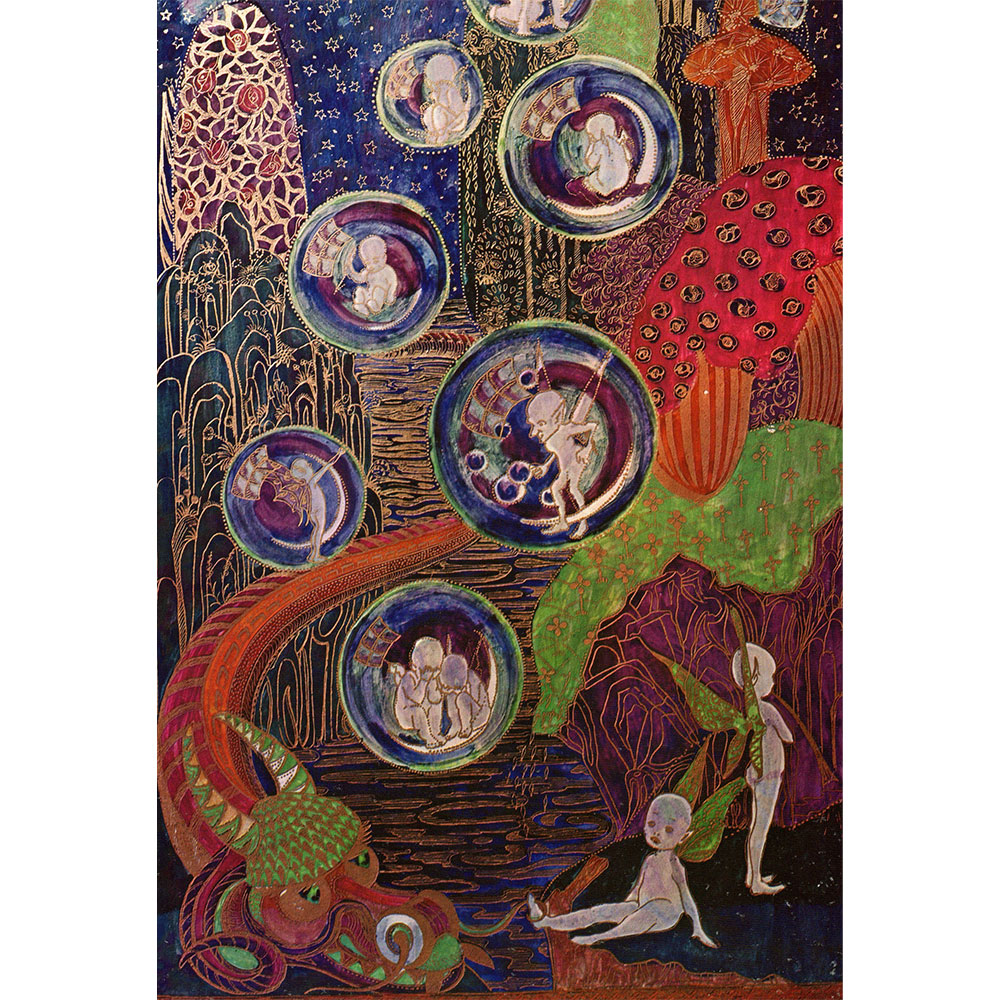
Wedgwood Bubbles Plaque by D. Makeig Jones
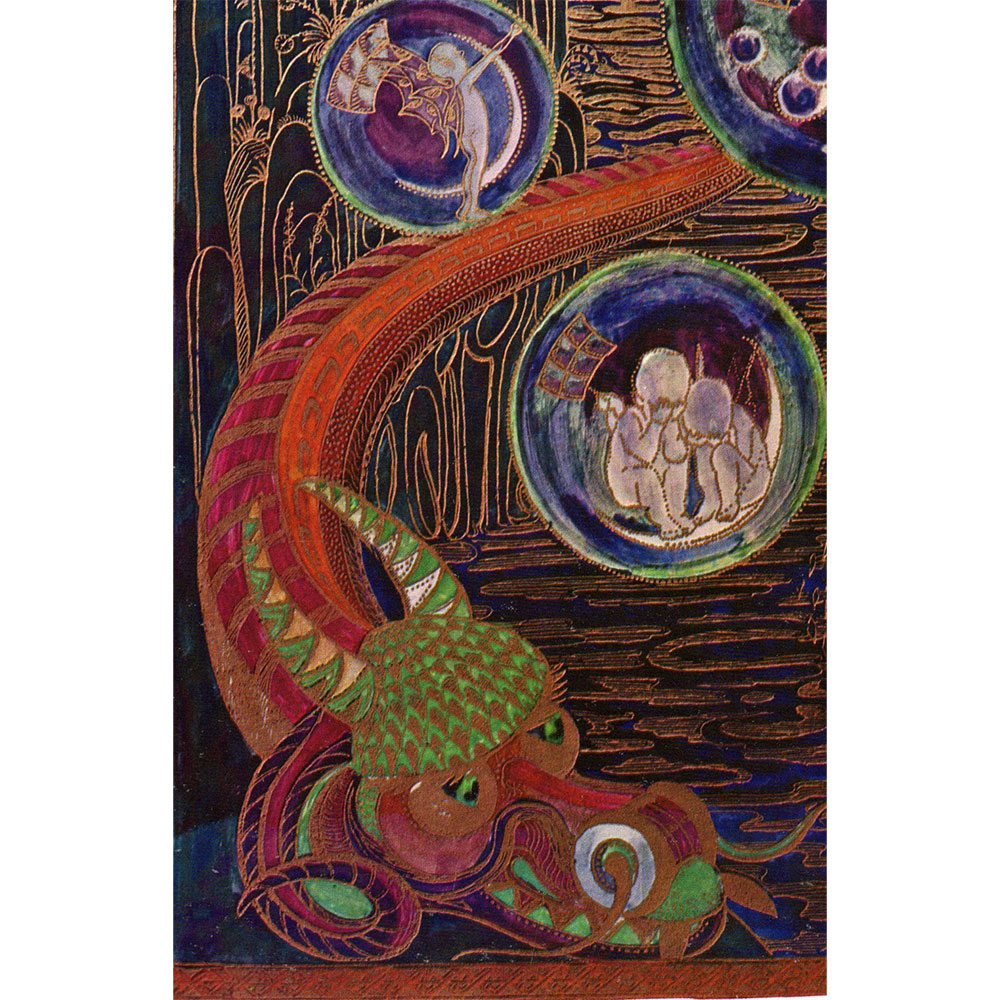
Dragon detail Bubbles Plaque
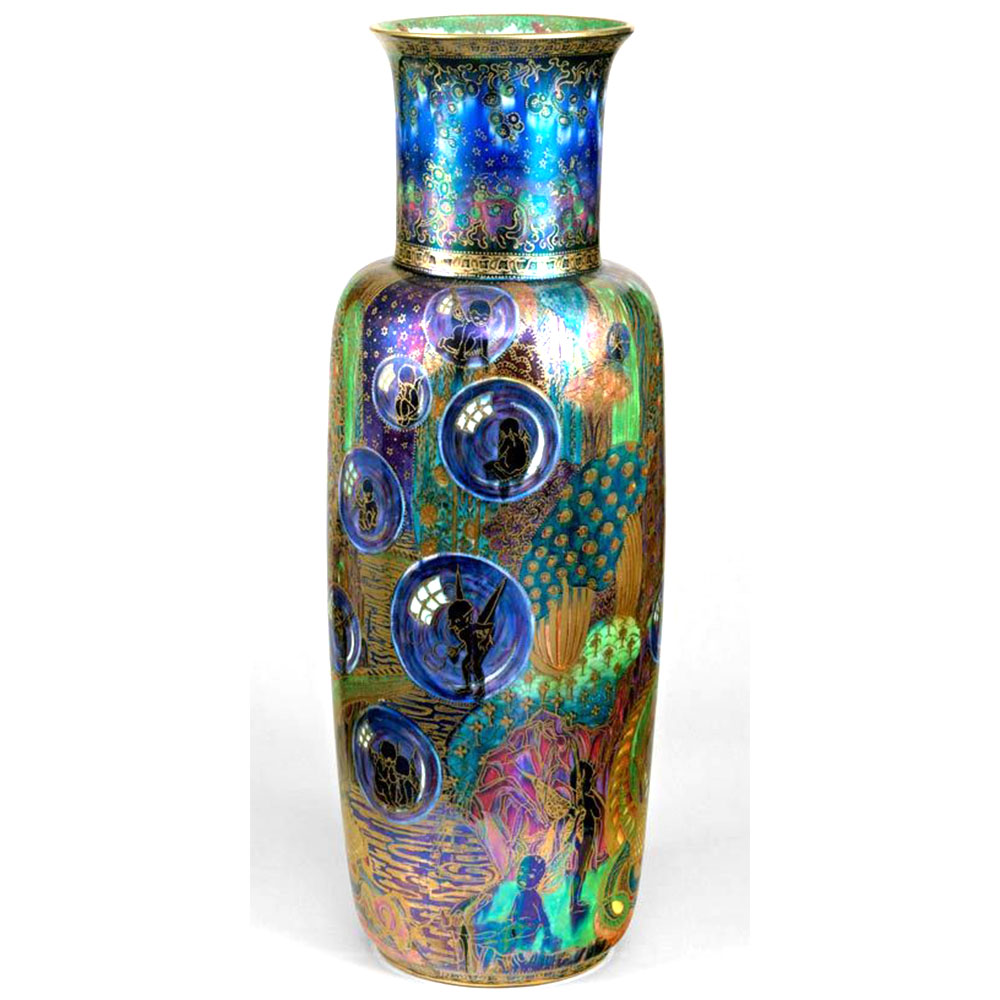
Wedgwood Bubbles Vase by D. Makeig Jones
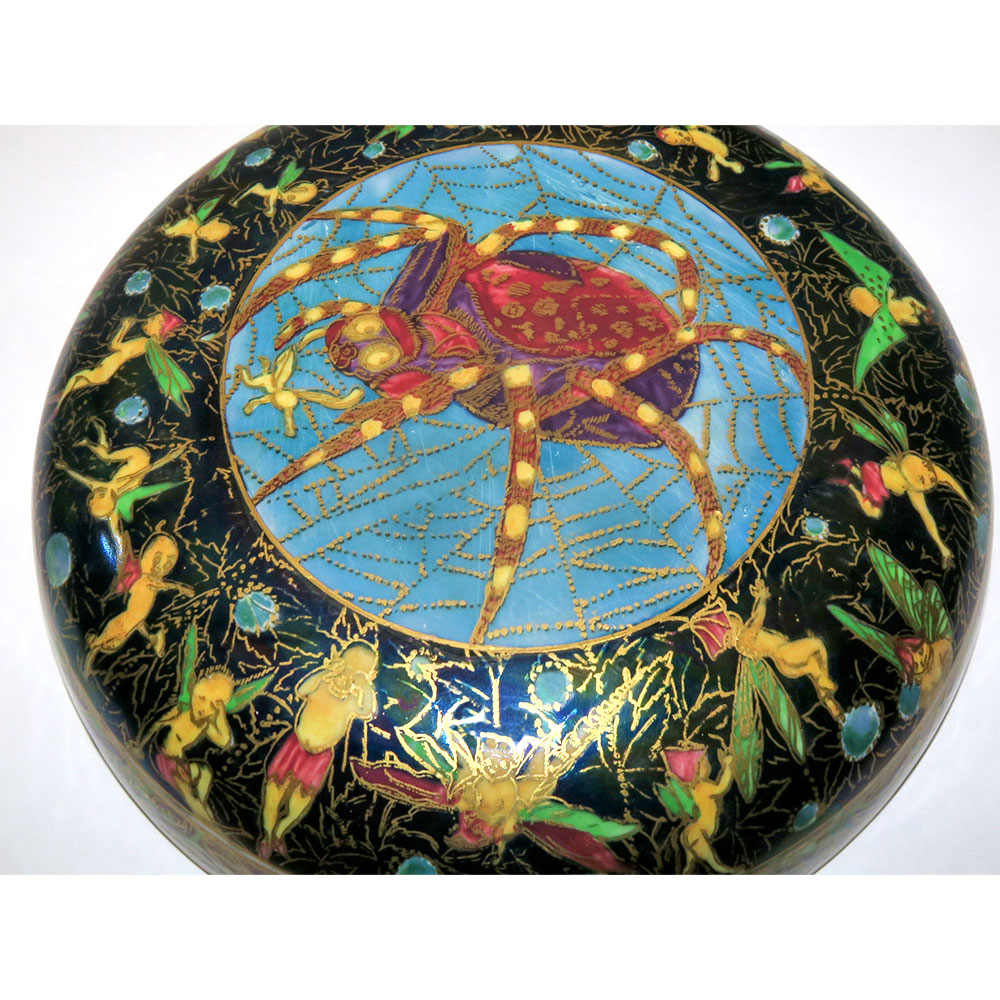
Bubbles lid with spider
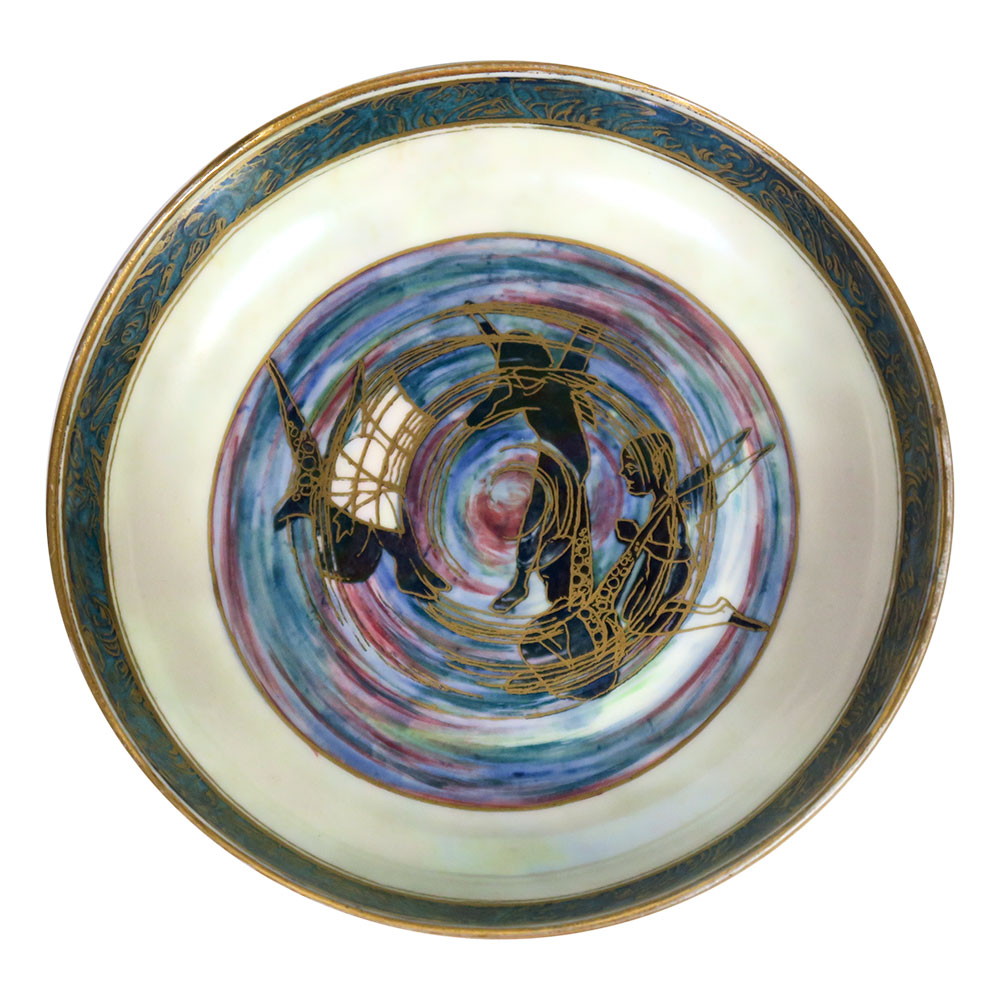
Bubbles inside the lid
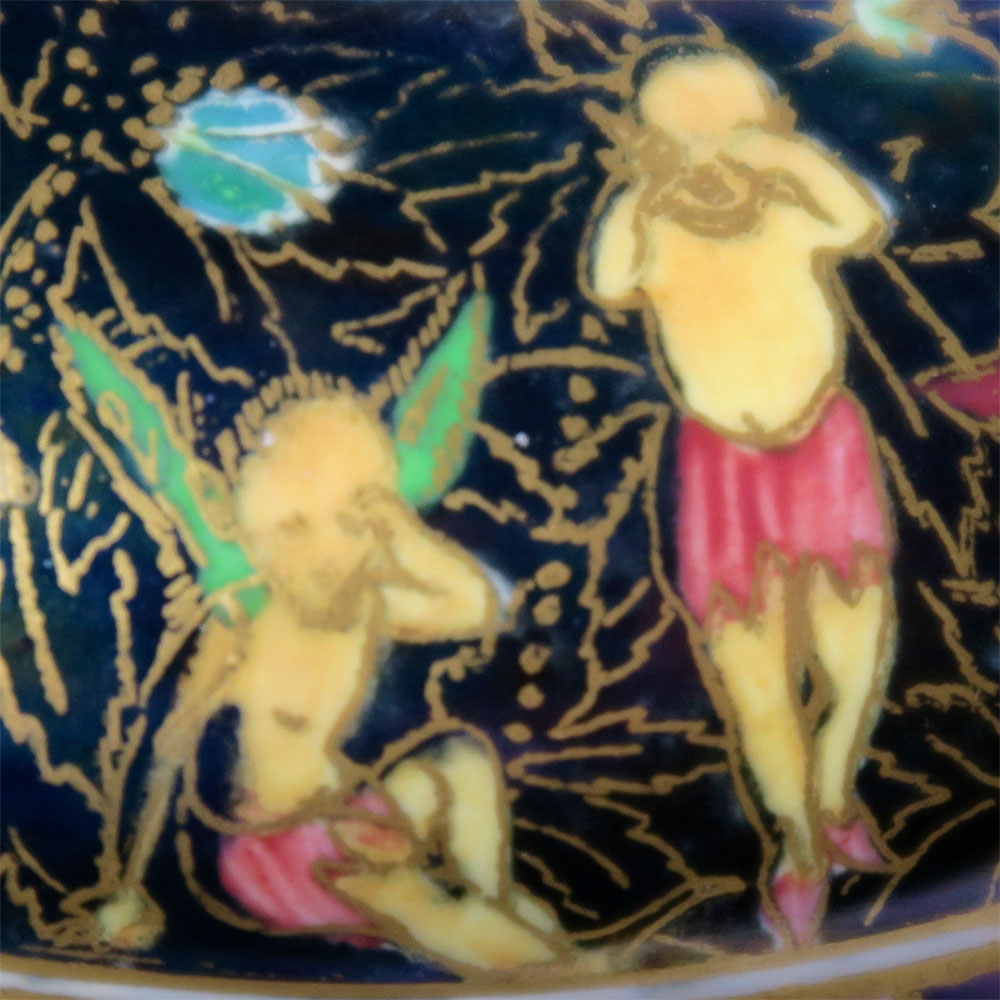
Bubbles crying elves
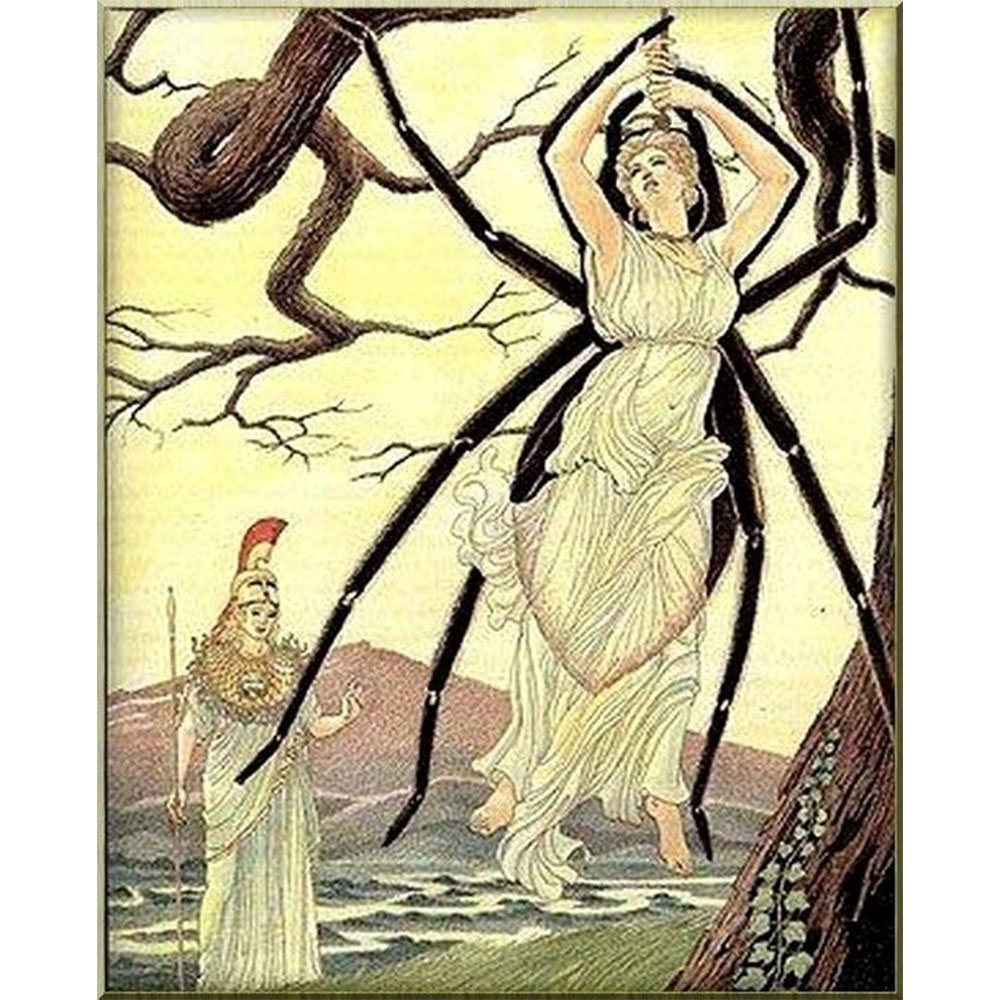
Arachne
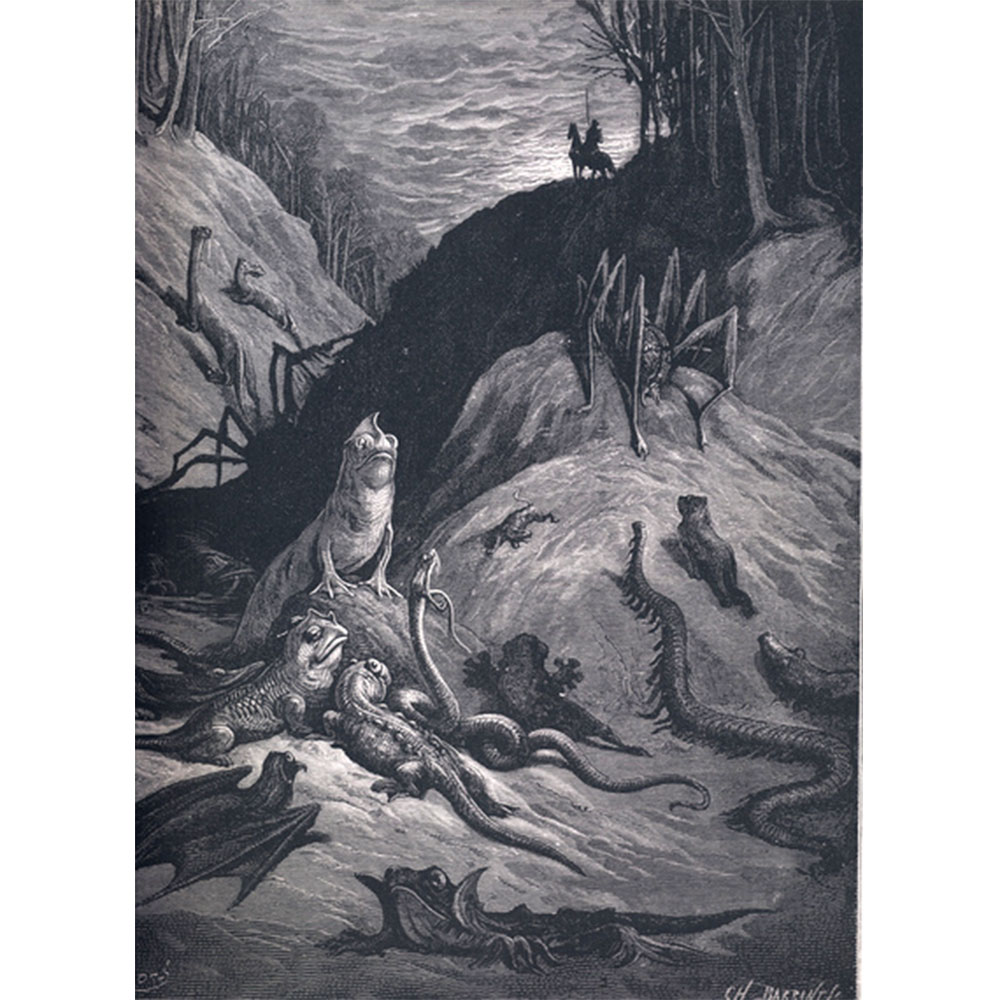
Spider Pit by G. Doré
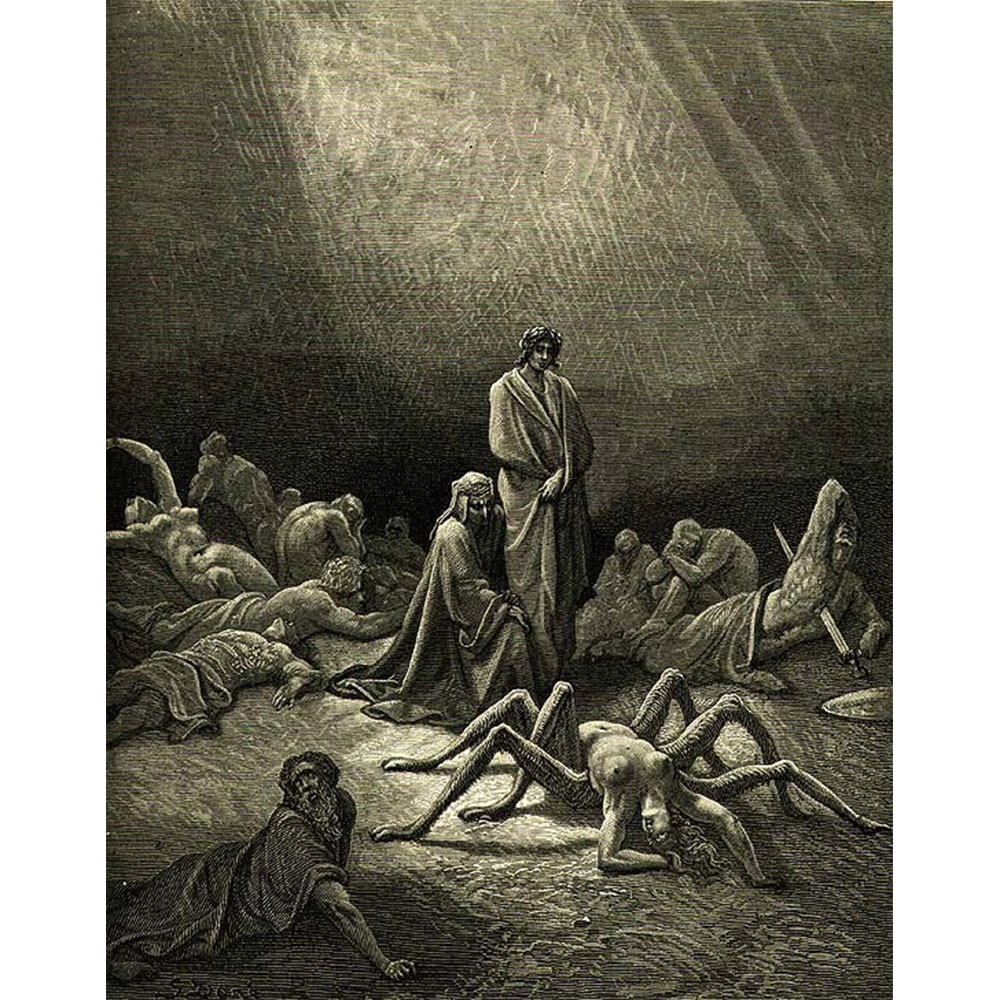
Arachne in Dante’s Purgatorio by G. Doré
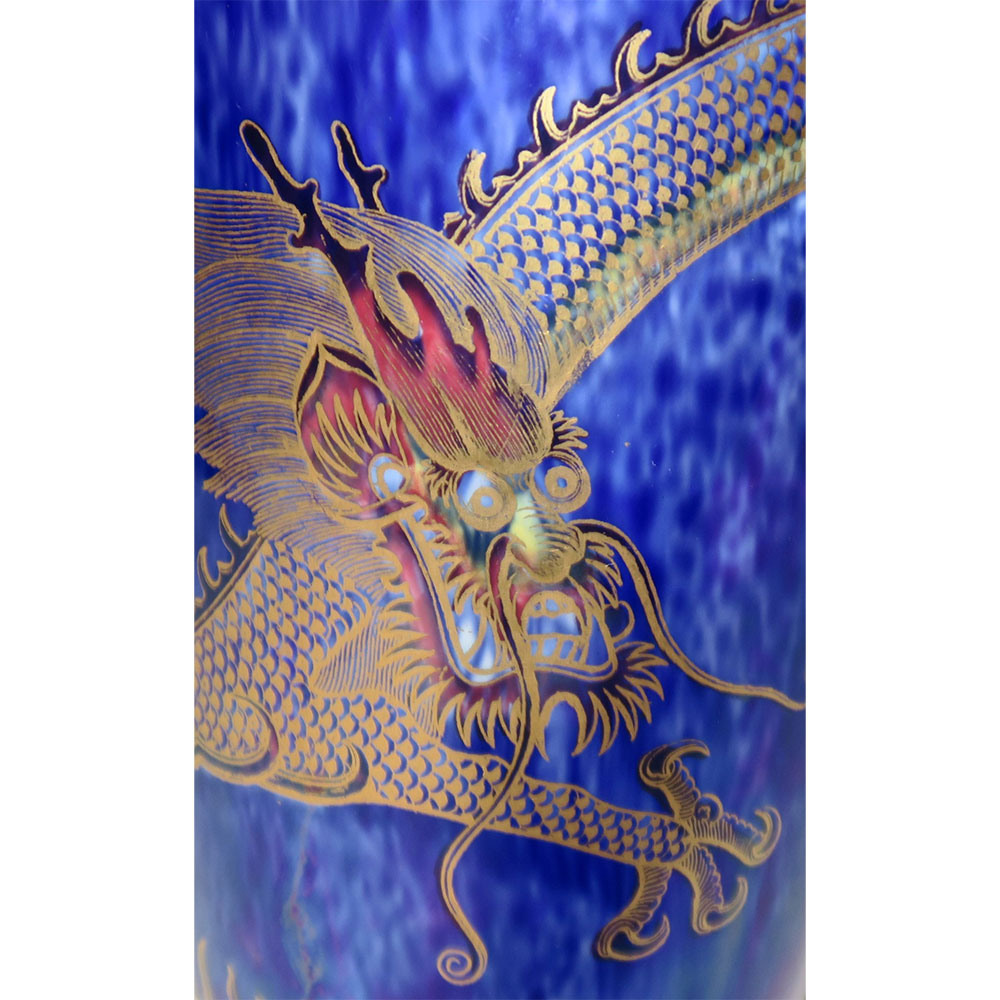
Dragon detail
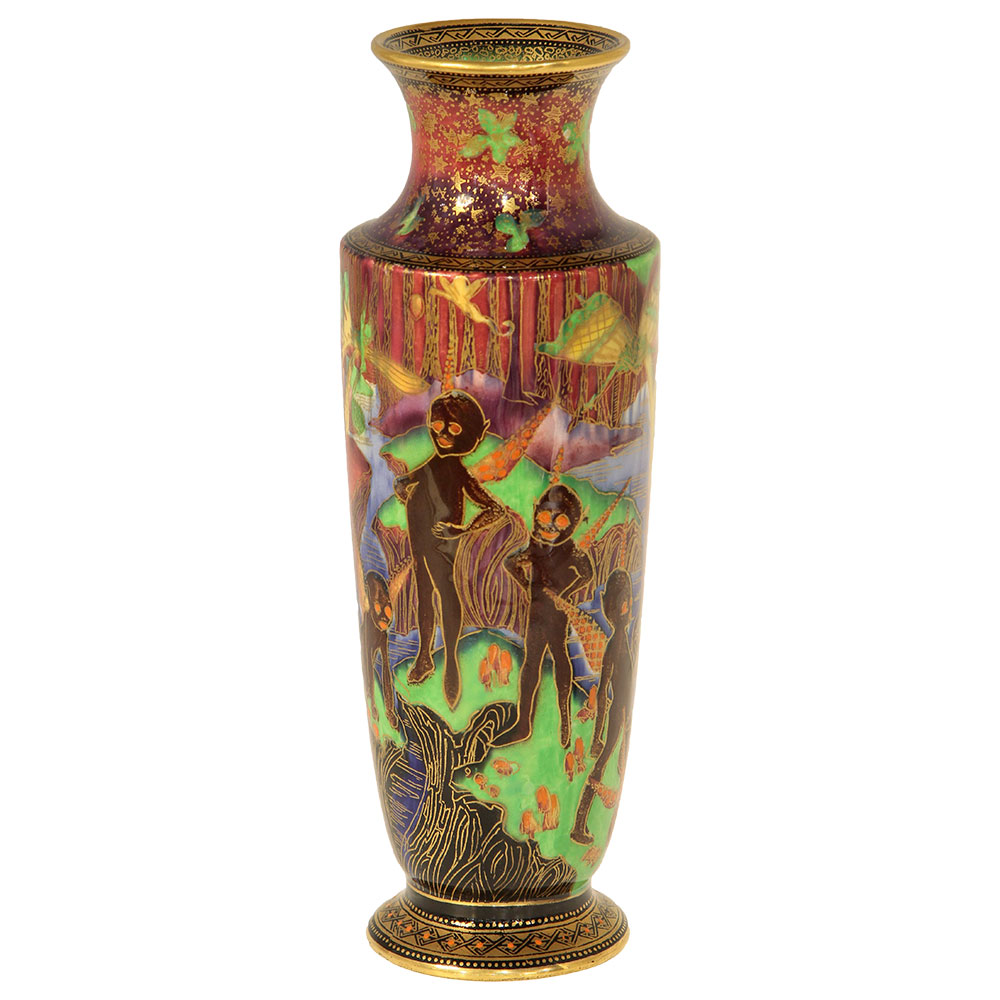
Wedgwood Fairland Lustre Goblins Vase by D. Makeig Jones
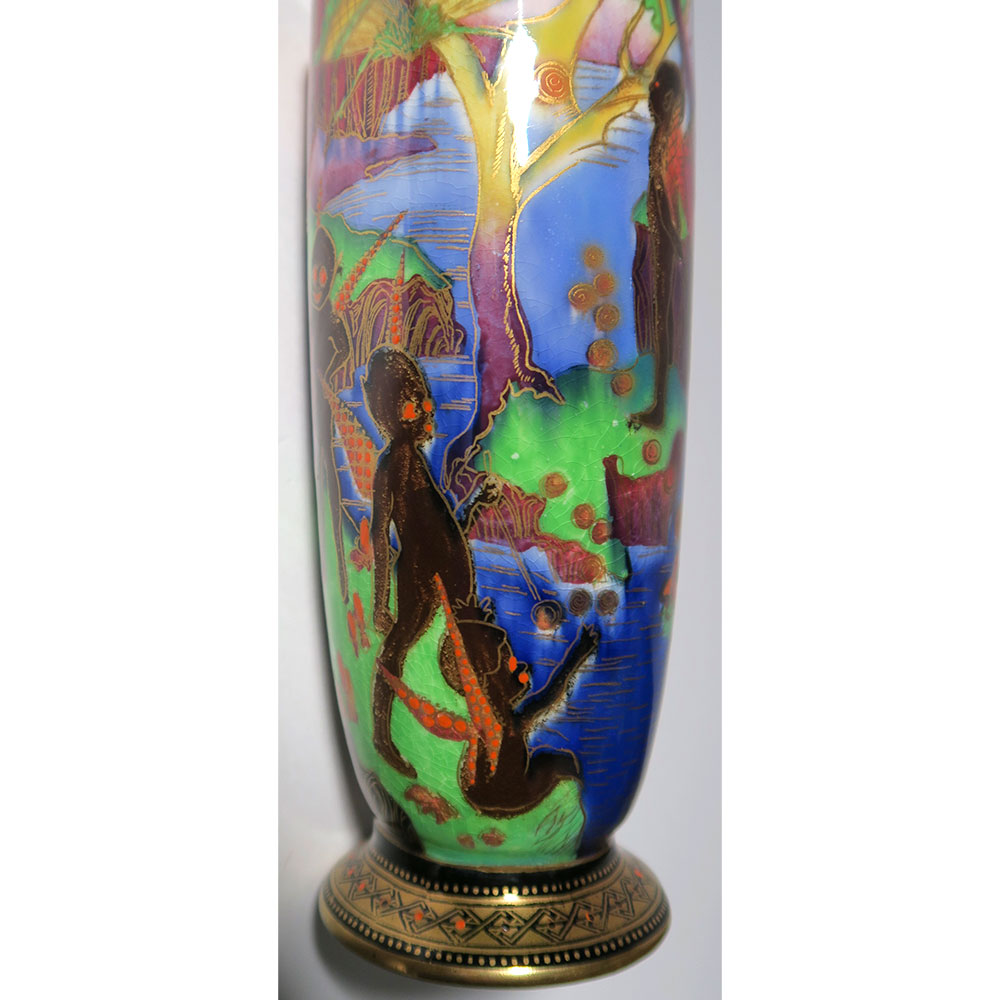
Goblins Vase detail
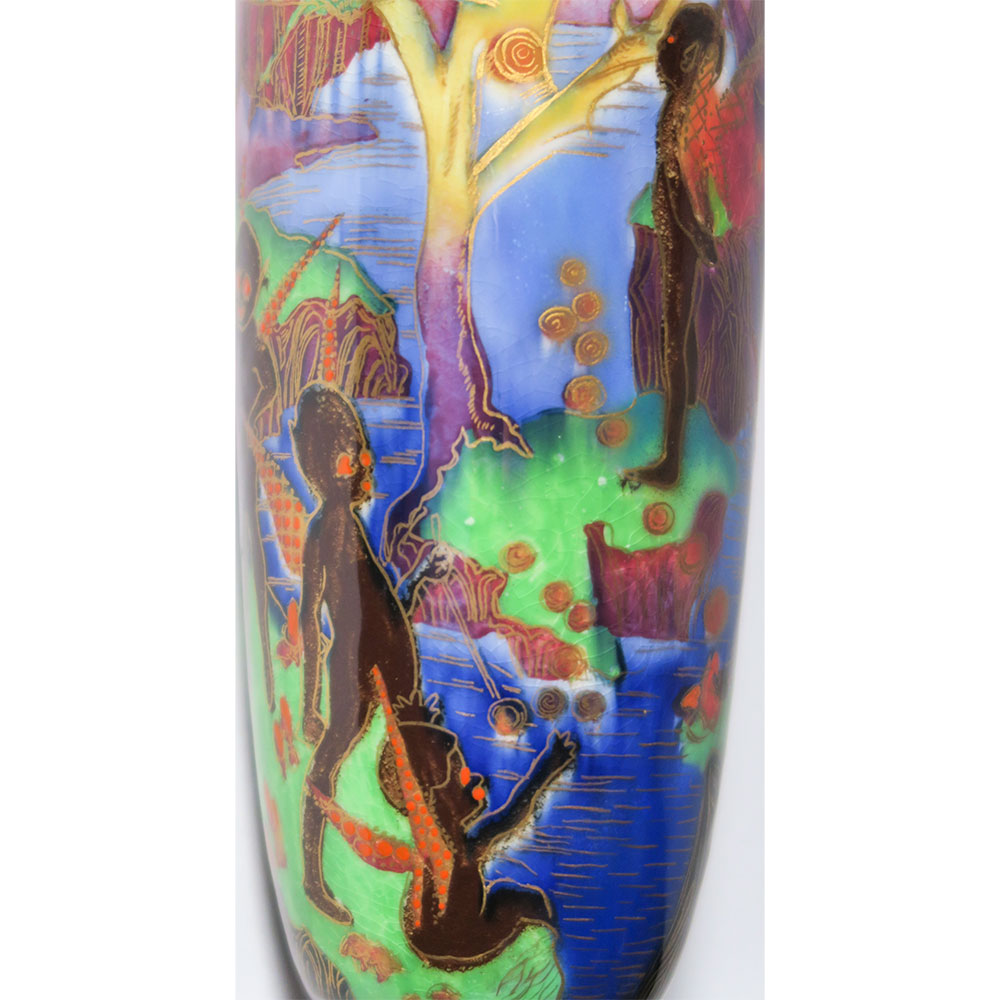
Goblins blowing bubbles detail
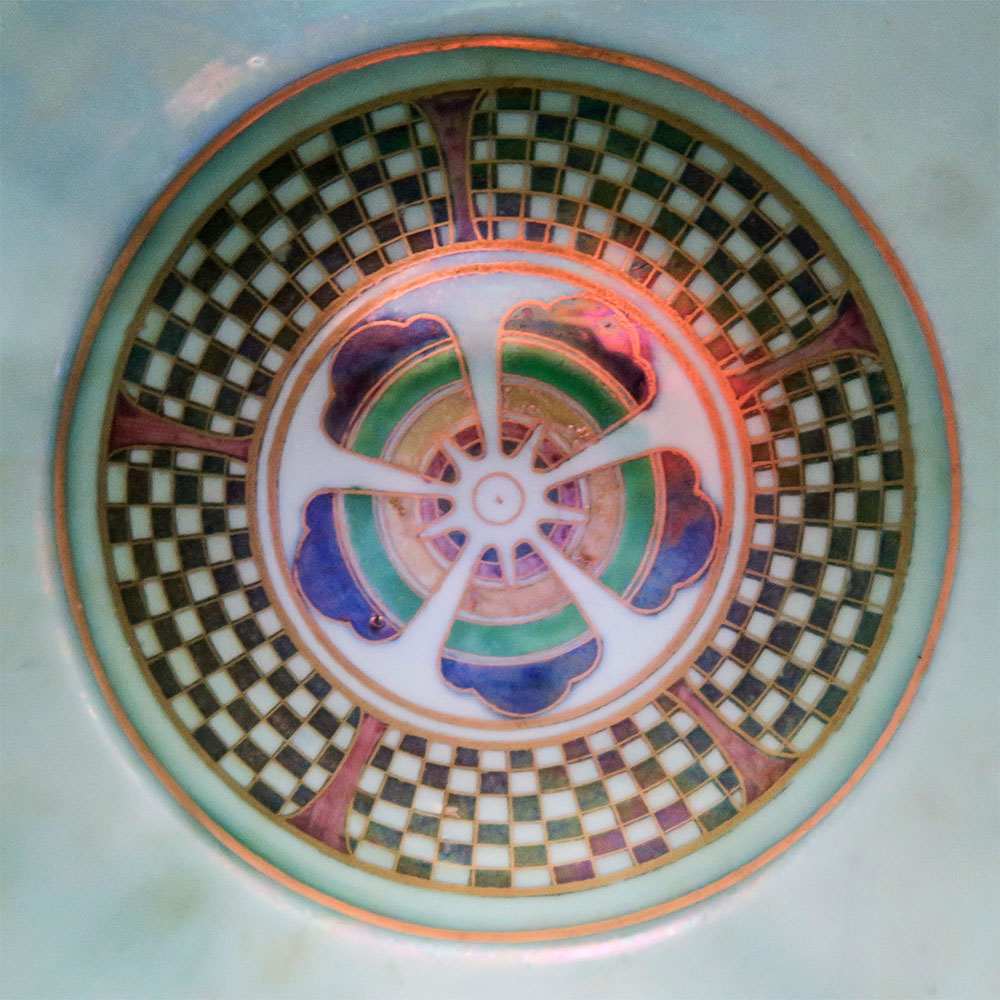
Bubbles Malfrey Pot detail
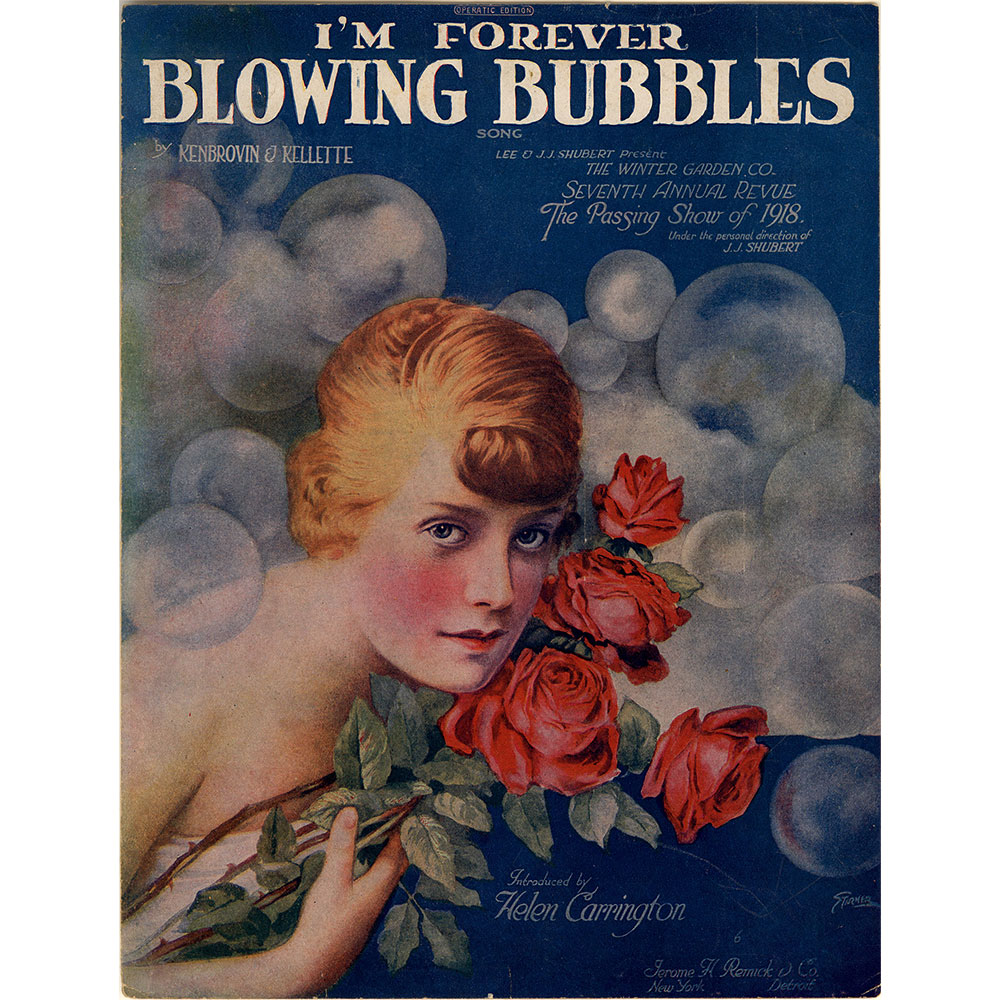
Blowing Bubbles Sheet Music
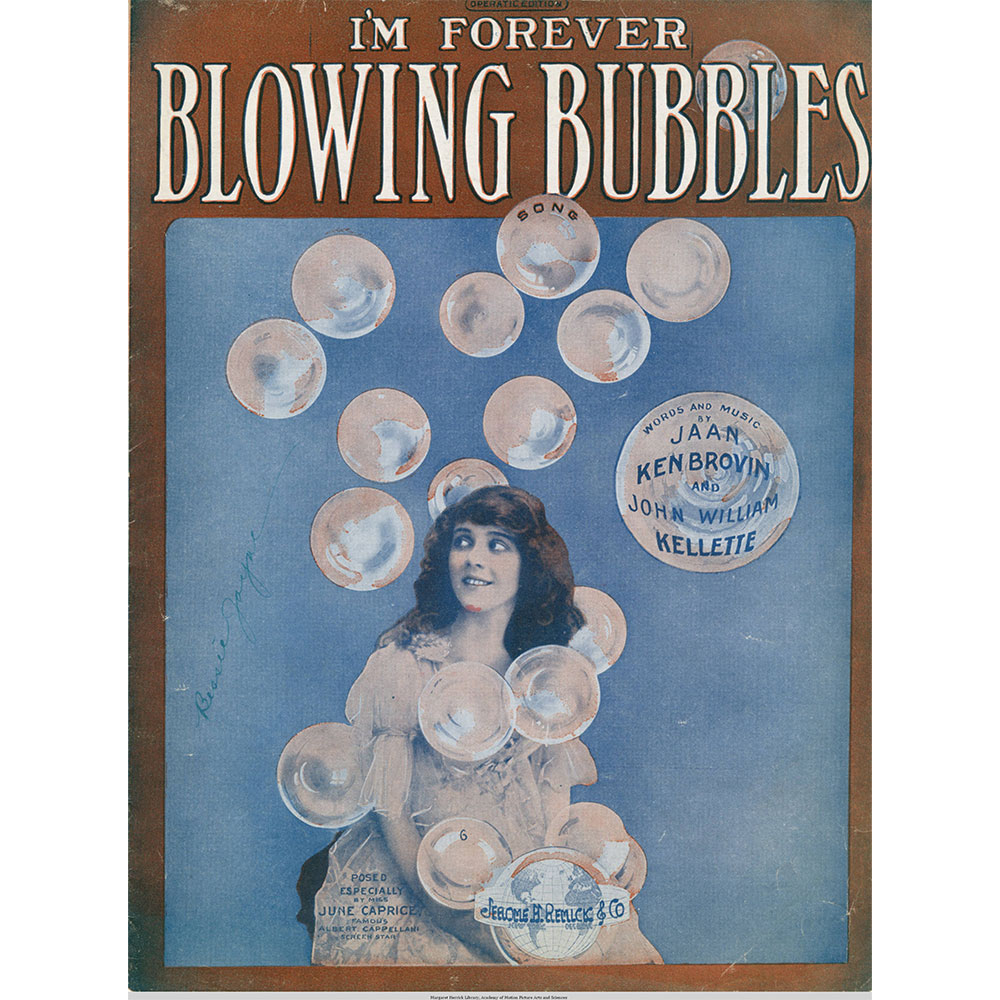
Blowing Bubbles Sheet Music
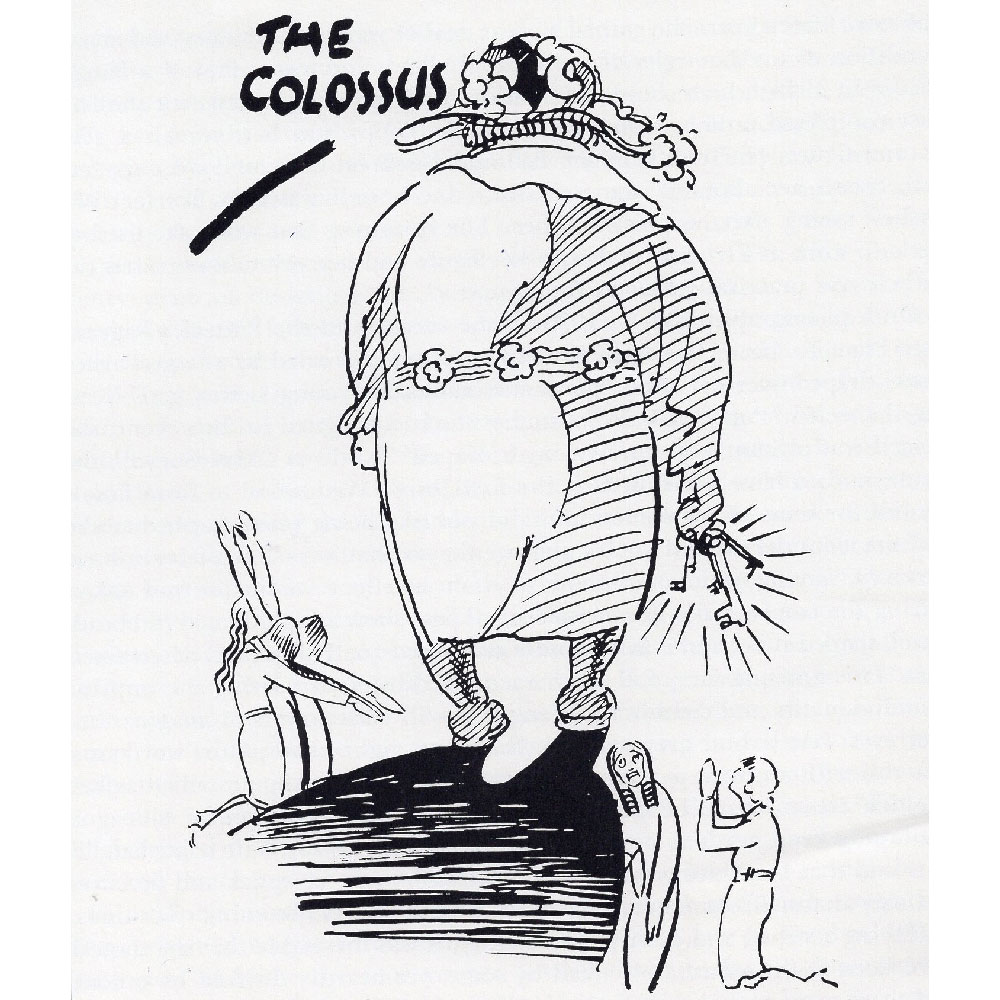
Daisy Makeig Jones cartoon
